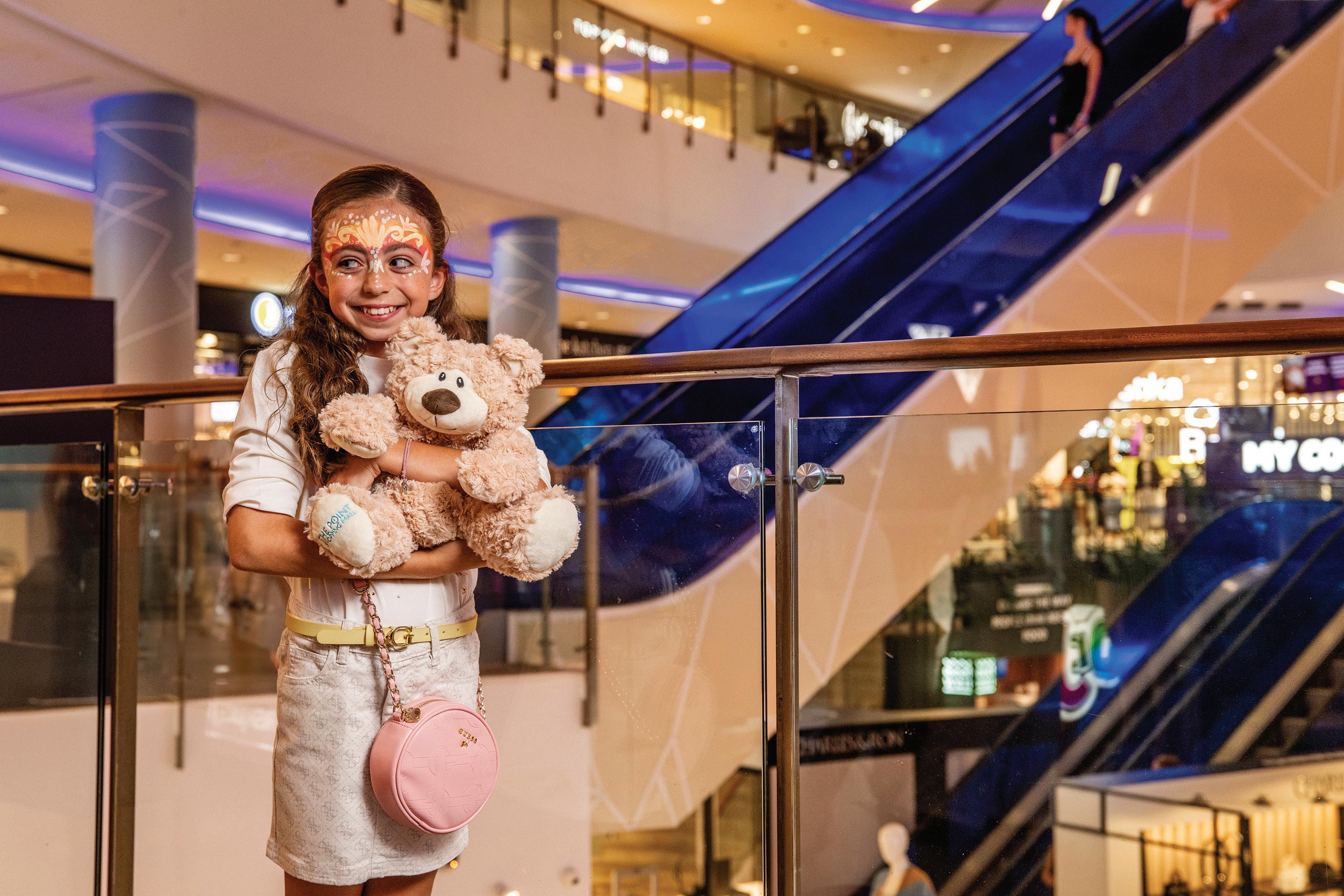














SCENTONIQ specialises in delivering premium and niche perfumes to customers in Malta, featuring over 30 exceptional brands from across the world. This unique retail concept is a new shopping experience, merging lifestyle, art, design, and perfumes, all under one roof.
EAU DE PARFUM
By Casamorati
A sweet and spicy blend of rum, davana, and pink pepper captivates at first spray, while tuberose enchants the heart, leaving a sensual scent that lingers like a lover's touch into the night.
EAU DE PARFUM
By Boadicea The Victorious
EAU DE PARFUM
By Lorenzo Villoresi
The soft aroma of perfumed powders, enriched with natural extracts from

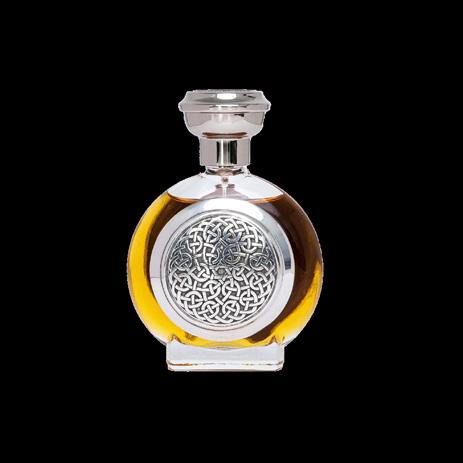
avant-gardism, GnTonic features a tonic, fresh, sensual, and refined trail. Perfect for "anytime, anywhere."
100ml | €245
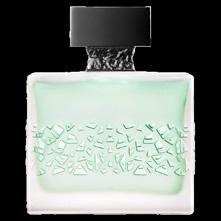

EXTRAIT DE PARFUM
By Clive Christian
This invigorating Citrus Aquatic perfume features sparkling notes of Apple Blossom and Marine Bergamot, with a heart of zesty green rhubarb, mint, and sugar. The base combines velvety sandalwood and aromatic driftwood for a fresh, energising scent.
50ml | €450



By Escentric Molecules
A super-special riff on black tea's alluringly sensual aromatic flavour that goes beyond composition.
100ml | €140
...and many more.
EXTRAIT DE PARFUM
A tribute to elegance, kindness, and artistry, this eau chypre inspired by traditional shadow play features stimulating notes of pineapple and bergamot, complemented by genuine woody
100ml | €345
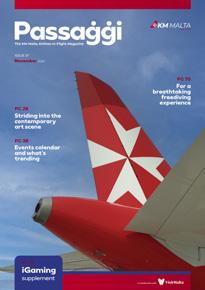
The tail of a KM Malta Airlines Airbus A320neo, proudly displaying the Maltese cross.
DESIGN
TBWA\ANG
EXECUTIVE EDITOR
Fiona Galea Debono
SALES AND BUSINESS DEVELOPMENT
TBWA\ANG
CONTRIBUTORS
Adriana Bishop
Alexandra Alden
Daniel Cilia
Din l-Art Ħelwa
Domenic Cucunato
Heritage Malta inkontru.app
KM Malta Airlines
Lisa Gwen
Sam Vassallo
Thomas Camilleri
Vanessa Macdonald
WOULD YOU LIKE TO BE FEATURED ON PASSAĠĠ I?
For advertising opportunities, get in touch with TBWA\ANG on passaggi@tbwa-ang.com or (+356) 2131 0608
Abigail: abigail@tbwa-ang.com or (+356) 9929 0518
Fiorella: fiorella@tbwa-ang.com or (+356) 7944 4692
COVER PHOTOGRAPHY
KM Malta Airlines
PHOTOGRAPHERS
Daniel Cilia
Joel Guellar
Jonathan Borg
Kurt Arrigo
Lisa Gwen
Malta Film Commission
HOW TO PRONOUNCE PASSAĠĠ I /pasˈsadʒi/
Here’s the breakdown:
• /p/ as in pass • /a/ as in art • /sˈ/ as in sun (with stress on the following syllable) • /dʒ/ as the sound of the j in 'judge' (geminated or doubled sound) • /i/ as in eat
The word passaġġi means 'passages' in English.
The publisher, authors and contributors reserve their rights with regards to copyright. No part of this magazine may be reproduced or copied by any means without the written consent of the publisher. Editorial features and opinions expressed in Passaġġi do not necessarily reflect the views of KM Malta Airlines, the publisher, or the editorial team. Both KM Malta Airlines and the publisher do not accept responsibility for commercial and advertising content. Although the authors and publisher have made every effort to ensure that the information in this magazine was correct before going to print, the author and publisher do not assume and hereby disclaim any liability to any party for any loss, damage, or disruption caused by errors or omissions, whether such errors or omissions result from negligence, accident, or any other cause. Special thanks to KM Malta Airlines and VisitMalta for the provision of photographic material. Printed in Malta by Gutenberg Press. All magazine rights are reserved by KM Malta Airlines.
TBWA\ The Disruption® Company, 3rd Floor, Professional Building, Sliema Road, Gżira GZR 1633 Malta \ (+356) 2131 0608 \ tbwa-ang.com

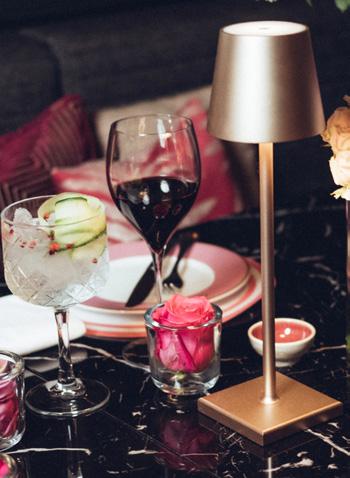
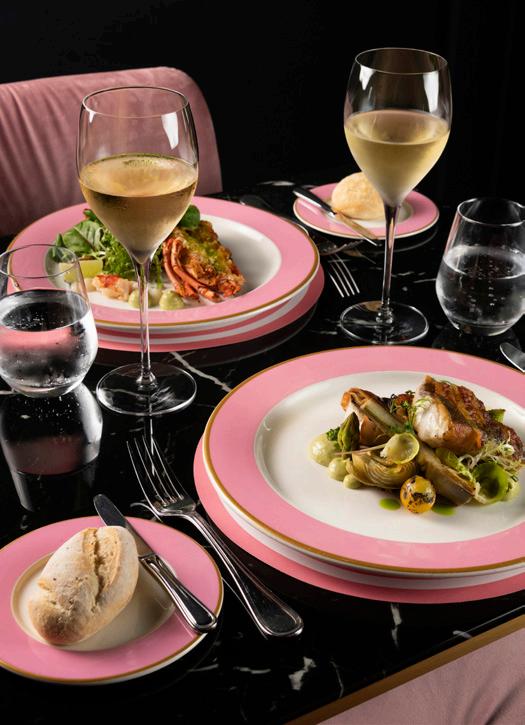

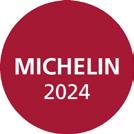
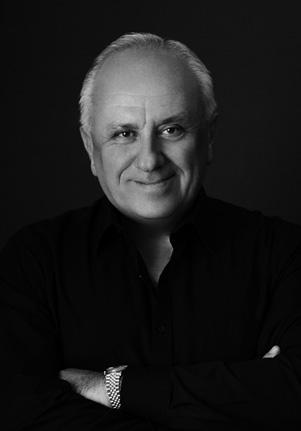
David Curmi Executive Chairperson KM Malta Airlines
Dear valued passengers,
I am pleased to welcome you on board and to introduce the inaugural edition of our in-flight magazine, Passaġġi. This publication has been thoughtfully designed to serve all our passengers, whether you are travelling from Malta or arriving to our remarkable islands. We trust that the curated stories and selected content will enhance your journey and experiences with us.
As Malta’s national airline, we take pride in operating a modern fleet of all Airbus A320neos, ensuring stable and reliable year-round connectivity to Europe and beyond through the 17 major city airports served by us.
Thanks to our valued partners –Lufthansa, Brussels Airlines, Austrian Airlines, SWISS, Air France, ITA Airways, KLM, Air Baltic, Turkish Airlines, Emirates and Qatar Airways – we are able to offer seamless connections to numerous destinations around the world.
In this magazine, you will find KM Malta Airlines news and safety information, along with stories that highlight the dedicated individuals behind our service. We hope this inflight magazine enriches your travel experience and makes your time with us more enjoyable.
I encourage all passengers to join the KM Rewards Loyalty Programme, allowing you to benefit from purchases made to travel on KM Malta Airlines. You can earn and spend SkyBux, gain Status Points, and progress through Tiers, making your journeys even more rewarding.
Thank you for choosing KM Malta Airlines. We look forward to welcoming you on board again soon.


Fiona Galea Debono Editor
With a new airline comes a new in-flight magazine and we are excited to launch the first issue of Passaġġi to accompany you on your trip.
Translated into the English ‘passages’, the name brings to mind travel and connectivity, as well as moving on and looking ahead. Referring to the act of passing from one state or place to the next, it also signifies a journey, and more specifically, the fare or ticket to take you there…
This is, indeed, your pass to discovering Malta, as well as looking beyond its shores to destinations, both near and far, that can be reached from the island, opening up channels inland and outside.
Aimed to offer passengers a taste of its highlights, help them plan their trip and heighten the desire to travel, tour, adventure and explore, Passaġġi is packed with useful information, intriguing tips and stimulating secrets for first-time visitors, regulars and residents alike.
Get acquainted with towns and villages as seen through the eyes of their inhabitants to be able to experience real everyday life; plan your next holiday armed with a list of the unseen attractions you don’t want to miss; find out what’s going on in the arts, culture and lifestyle scene to
maximise your time in Malta and do more than just the obvious.
We map out your path to entertainment and nightlife; to typical, traditional and trending foods; leading you, this month, along uncharted routes to Gozo’s clifftop, concealed heritage and deep down with the freedivers into the breathtaking Mediterranean Sea for an action-packed itinerary.
Join us on this rite of passage, a thrilling ride – and read – through a happening island’s events; and follow in the footsteps of high-flying visitors, stopping along the way to savour its cosmopolitan side and pick up the best of Made in Malta for that cherished authentic and unique touch.



A life of quiet elegance
Rabat is an oasis of history and vernacular architecture
Beyond the tourist trail
A deeper dig into Amsterdam 24
In the heart of The Big Apple
Hop over to the city that never sleeps
ART 28 Watch this (art) space
The formation of MICAS and future exhibitions
HERITAGE 34
Putting the pieces together
Ongoing research at the Msida Bastion garden of rest
CULTURE 38
Unmissable events
This month’s brimming cultural calendar


ENTERTAINMENT
What’s up?
The trends to try this winter
NIGHTLIFE
49
Shattering reputation; building allure
A night out on the town FOOD
54 Mediterranean. Fusion. Vibrant
A chef’s take on Malta’s culinary scene
58 Dead Men’s Bones
Traditional almond biscuits for Halloween GOZO
62
Stepping into an ancient Mediterranean world
Wander off to the little-known Ras il-Wardija sanctuary HOME
64
Kilning it around the world
Made in Malta ceramics with that Mediterranean feel ACTION
70 Flying underwater
The secrets of freediving
iGAMING SUPPLEMENT
76
A decade of success
Meet the man behind the 10th SiGMA gaming expo AIRLINE NEWS 88
Flight, company and destination information
All you need to know about flying with KM Malta Airlines



Words by Domenic Cucunato
A product designer, Domenic, from the US, has been living in Rabat for seven years.
Rabat is just a short walk from Mdina, but although the former capital may take centre stage, this oasis of history and vernacular architecture offers its own dose of charm.
Perched in the highlands of Malta, Rabat is a village where the past whispers through a labyrinth of honey-hued limestone streets and the Mediterranean breeze wafts through the pjazza on the steps of St Paul’s Church.
To visit Rabat is to be surrounded by an eclectic tapestry of history, woven into the fabric of everyday life. A village largely unchanged in its identity since antiquity, Rabat has remained and retains the characteristics of ‘the village life’, both in its physical construction and socially, evident in the built environment and the numerous authentic local festivals, vendors, cafés and restaurants.
Rabat’s streets, with their meandering paths and sun-kissed stone façades, are a testament to the town’s Roman and Arabic origins. Located to take advantage of the water reserves that naturally percolate through the underlying limestone bedrock, as far back as 1000 AD, its inhabitants were using an elaborate system of water galleries containing shaft wells, known as qanat to deliver water.
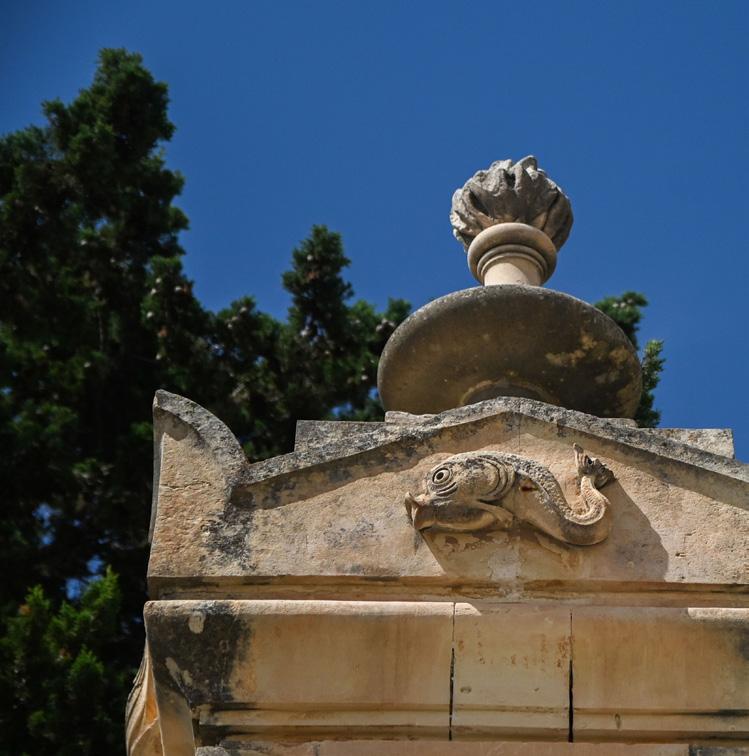

The qanat system, crafted during Roman times, is a marvel of engineering, which has sustained the village for millennia and remains as a testament to the ingenuity of its inhabitants.
When walking the streets of Rabat, the varied architectural influence of a colonial history is evident in the Neo-Renaissance, Baroque and British Victorian elements of the masterfully hand-carved façades.
Perched on the town’s edge, one of the most magnificent examples of a Maltese villa is Luginsland, with its elegant design and lush gardens, commanding a panoramic view of the island. Today transformed into a cultural hub for art exhibitions and events, it offers a glimpse into the opulence of the nobility, who chose to make Rabat their home in the 19th century.
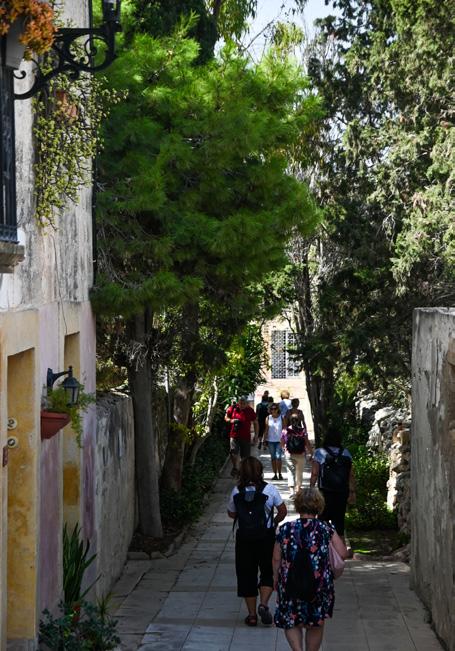

Not far from it stands the iconic Casino Notabile outside the walls of Mdina. An ornately decorated neoclassical structure, it was originally built as a gathering place for Malta’s elite. Its intricate reliefs and exquisitely crafted details exude both a skill in craftsmanship and sophistication in aesthetics.
On a sunset stroll, starting from the Domvs Romana and down beside the Għeriexem valley, one of the most scenic views of Malta can be enjoyed. Depending on the time of year, it is either a lush green meadow, or an auburn golden field, both equally as beautiful.
In the distance stands the British-era railroad bridge that spans the valley, a relic from the days when a steam railway connected Rabat to Valletta. Though the trains no longer run, the bridge remains a poignant reminder of Malta’s colonial past, seamlessly blending with the town’s landscape and offering yet another layer of historical intrigue.




Life in Rabat unfolds at a leisurely pace. Just beyond the town’s borders lies the countryside, where gentle landscapes stretch into the distance, and the densely forested former hunting grounds from the Knights' era, known as Buskett Gardens, beckon for moments of escape.
In Rabat, nature and history intertwine effortlessly, offering a peaceful retreat for those who seek solace in quiet, sun-drenched corners. The town’s warmth is reflected in its closeknit community. Local cafés serve traditional Maltese fare, their aromas wafting through the air, inviting you to sit and savour each bite, while familyowned shops and markets line the streets, where personal connections flourish with every exchange.
Despite its idyllic seclusion, Rabat is well connected to the rest of the island, offering easy exploration of Malta’s bustling cities and coastal treasures.
For those who long to immerse themselves in Malta’s rich heritage, while savouring a life of quiet elegance, Rabat offers an unparalleled experience. With its architectural gems, ancient wonders and serene landscapes, it is a place where the past and present coexist harmoniously – a true sanctuary for the soul.
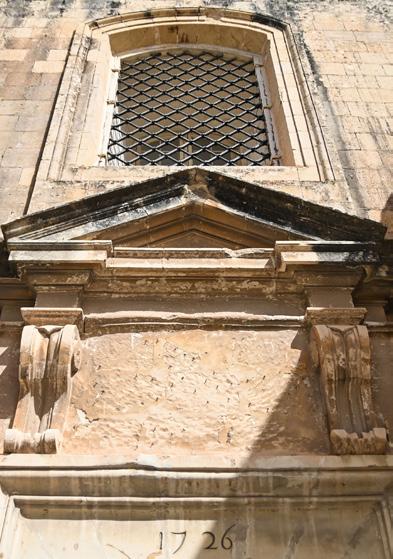

St Cataldus Catacombs may be overshadowed by other, more renowned Maltese underground cemeteries, but this ancient burial chamber has one of the best examples of a ritual agape table, a circular platform hewn out of the rock and used for early Christian funerary rituals.
Casa Bernard, a 16th-century palazzo, is an opportunity to step into a private family home that combines beautiful architectural features with a rich historical evolution.
The Wignacourt Museum, linked to St Paul’s Grotto, which is the cradle of Christianity in Malta, houses underground tombs and an impressive picture gallery, including works by artists Mattia Preti and Antoine Favray.
Don’t miss out!
Follow Passaġġi’s pick and mix of eateries on your visit to Rabat… Treat yourself to culinary delights in between exploring catacombs and cloisters. From panoramic views of Malta to a cosy, cave-like ambience, band clubs and traditional cafés, the cuisine is as vast and varied as the town’s rich history.
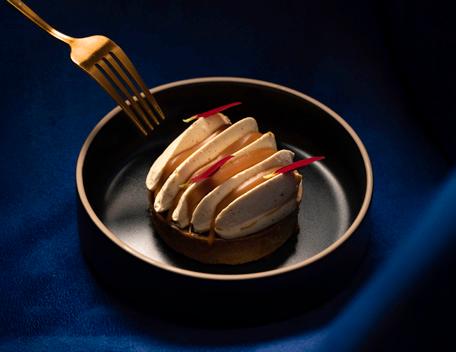

MARIE PATISSERIE
Triq il-Wesgħa tal-Mużew, Rabat
Marie Boutique Patisserie is dedicated to that woman who works hard with passion, respect and love for her family. Its inspiration comes from this humble and loving woman, who is there for everyone. Here, everything is made from scratch, whether savoury or sweet, using both original and modern techniques. It is committed to using local, seasonal produce to make the best of each ingredient and every season.
(+356) 7900 2999
Marie Boutique Patisserie marie_boutique_patisserie
AGATA RESTAURANT
Karrijiet, Rabat
Agata Restaurant is a cosy, family-run establishment, known for its warm ambiance and authentic Mediterranean dishes. Whether you're craving gourmet pizza, delicious pasta, or expertly seared meat, Agata offers a menu that caters for every taste. Located in the heart of Rabat, it's the perfect spot for a delightful culinary experience with a personal touch.
(+356) 2145 0607
(+356) 9942 4812
Agatarestaurantrabat agata_rabat


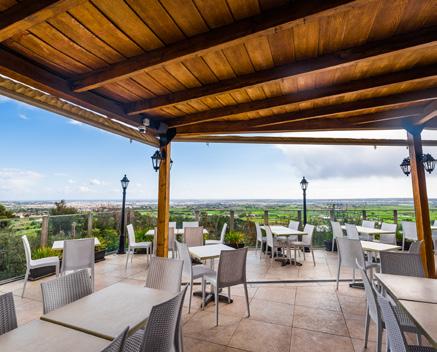

Triq San Pawl, Rabat
Bottegin Palazzo Xara is the perfect place to eat out. A band club and social spot, it offers an authentic local dining experience. The beautiful and inviting courtyard, coupled with outstanding cuisine, ensures a memorable dining experience. Customers on Tripadvisor and Google have raved about the restaurant’s cosy atmosphere and excellence in both food and service, describing it as “one of the best places to eat in Malta”. Don’t miss out on the opportunity to sample some of the finest local cuisine.
(+356) 7945 4538 bottegin.com.mt botteginpalazzoxara botteginpalazzoxara
Misraħ Ii-Paroċċa, Rabat
The Michelin-recommended Grotto Tavern restaurant offers a unique and unforgettable dining experience in the heart of Rabat. Nestled in a cave, the ambience is enchanting and romantic. Grotto Tavern’s chefs expertly craft tasting menus that showcase their passion for local and seasonal ingredients. Guests can sample innovative dishes by indulging in its five- or seven-course experience. A visit to Grotto Tavern is a must for those seeking fine dining with a twist.
(+356) 7945 3258 grottotavern.net grottotavernrestaurant thegrottotavern
Is-Saqqajja, Rabat
As the name implies, Il-Veduta is blessed with unparalleled views of two-thirds of Malta, directly overlooking the countryside and distant sea. Situated just outside the fortifications of Malta’s old capital, Mdina, the restaurant has become a household name with families. The spacious establishment is split on three levels and can cater for large groups of up to 300 people. Its diverse menu consists of a vast selection of delicious Mediterranean fare, with a variety of starters, pizzas, pasta and grills, all modestly priced.
(+356) 2145 4666 (+356) 2145 3656 veduta.com.mt
Main Street, Rabat
Café Santa Lucia honours fresh ingredients and traditional recipes. Patrons can enjoy delightful treats like the Maltese honey ring (qagħaq tal-għasel), filled with an aromatic honey and treacle mixture, and the Maltese pudina, a dense bread pudding with cocoa, fruits and nuts. For savoury options, the qassata features high-quality pastry filled with ricotta, peas, or spinach. This café is a perfect spot for enjoying quality food over coffee or taking home delicious treats, celebrating artisanal flavours in every bite.
(+356) 2145 1852 cafesantalucia.com
Words by Heritage Malta
The national agency for museums, conservation practice and cultural heritage, it is the guardian of over 8,000 years of history.
If this is your first visit to the Maltese Islands, you cannot leave without ticking these sites off your list.
The Inquisitor’s Palace is both a historic house museum and the National Museum of Ethnography. Built in the 1530s, it was the powerhouse of the Holy Roman Inquisition that dominated Malta for over 224 years. After the French abolished the Inquisition in Malta upon their arrival in 1798, the building served French and British rules, as well as the Dominican Order for a period of time after World War II. The Inquisitor’s Palace also houses the National Textiles Collection.
Newly restored and proudly dominating St George’s Square, the Grand Master’s Palace invites you to wander along its 450-year history as a centre of power and the symbol of a nation. Presently the seat of the Office of the President of Malta, the palace grants visitor access to over 85 per cent of the building’s footprint, including the magnificent Armoury. Its restoration project was partly financed via the European Regional Development Fund (ERDF).


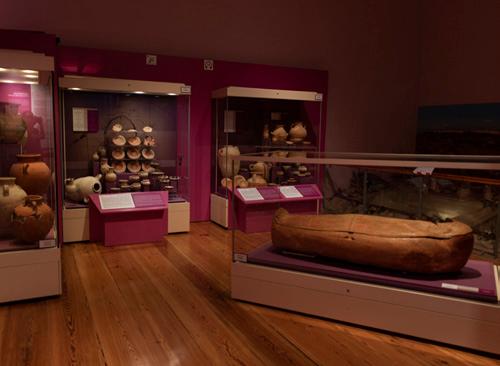
With artefacts dating back from Malta’s Neolithic period (5900 – 2500 BC) up till the early Phoenician period (8th – 6th Century BC), the National Museum of Archaeology is definitely your first step to understanding the richness of the land you tread on, its people and their ancestors. Its ground floor is dedicated to the Neolithic period, while the upper floor currently houses the Bronze Age and the Phoenician period sections. The museum regularly hosts temporary exhibitions.

The Ġgantija Archaeological Park complex is a unique prehistoric monument listed by UNESCO as a World Heritage Site. Situated in Xagħra, it consists of two structures built between c.3600 and c.3200 BC. Notwithstanding its age, the monument survives in a considerably good state of preservation. Entrance to the Ġgantija Archaeological Park is through an interpretation centre, which houses a selection of the most significant artefacts discovered at various prehistoric sites in Gozo.

The acronym MUŻA refers to the mythological Muses of Classical Antiquity and to the Maltese term for artistic inspiration. Through a varied collection of paintings, sculptures, furniture, silver pieces, works on paper and objets d’art, MUŻA’s main focus is to show artistic developments in Malta impacted by its Mediterranean context, as well as the cultural influences resulting from the governance of the Order of St John (1530 – 1798), the British Empire (1800 – 1964), the post-Independence period (from 1964) and the overall impact of the Church.

A stroll along the beautiful Birgu waterfront is not quite complete without a visit to the Malta Maritime Museum, housed within the Old Naval Bakery and charting 7,000 years of Malta’s maritime history, from prehistory to the present day. The museum partly reopened its doors in February 2024, having been closed for some years for a major rehaul, partially supported by the EEA Norway Grants. Presently, it houses a one-of-a-kind exhibition titled An Island at the Crossroads.







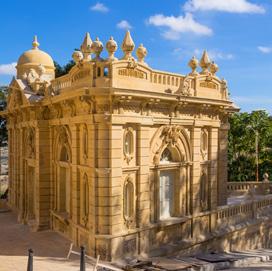


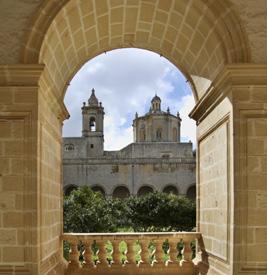
Words by Alexandra Alden
A Maltese singer-songwriter, Alexandra is based in Rotterdam.
There’s much more to Amsterdam than its ‘coffeeshops’ and Red Light District. For those willing to dig deeper and look beyond the typical tourist guidebooks, the Dutch capital is rife with subtle beauty and hidden charms.

A trip to Amsterdam is often seen as a rite of passage for young travellers taking their first steps alone, away from the surveying eyes of parents. Lured by its reputation for unbridled pleasures and liberal attitudes, Amsterdam’s city centre offers obvious attractions like all-night raves, coffeeshops (not to be mixed up with the traditional cafés selling coffees and baked goods), canal boat trips, the provocative displays at the Red Light District, and typical drinks and bites to grab on-the-go such as fries and bitterballen
However, there’s much more to Amsterdam than meets the eye. For those willing to dig deeper and look beyond the typical tourist guidebooks, Amsterdam is rife with subtle beauty and hidden charms. One such secret gem lies just across the river from the bustling centre: Amsterdam Noord.
This former industrial area has transformed into a vibrant cultural hub, offering a refreshing contrast to the well-trodden tourist paths of central Amsterdam. Getting there is simple – just take a free public ferry from
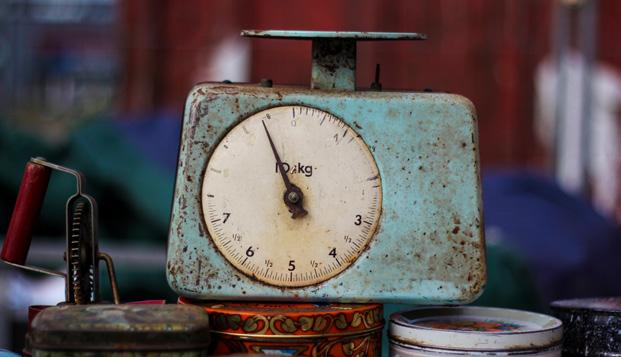
the back of Amsterdam Centraal station, departing every 15 minutes. It’s a scenic ride across the river and completely free.
You could begin your journey with a coffee at Café de Ceuvel, a bohemian oasis nestled along the riverside. Here, the aroma of vegan homemade cuisine mingles with the excited chatter of locals attending a fringe festival screening, or a mindfulness workshop. Take a peek into the Tolhuistuin close by and see whether there’s some live indie-folk music or singer-songwriter performance happening in their garden in the evening to continue in a similar calm atmosphere.
As you wander further, the striking architecture of the Eye Filmmuseum dominates the skyline. This waterfront landmark houses a treasure trove of cinematic history and cutting-edge film art. Inside, you’ll find exhibitions that span the evolution of Dutch cinema and the works of emerging
A retro food scale in IJ-Hallen flea market.
filmmakers pushing the boundaries of the medium.
On certain weekends, the air buzzes with the excitement of the IJ-Hallen market. This sprawling flea market, the largest in Europe, is a haven for vintage collectors and bargain hunters alike. Stalls overflow with everything from retro furniture to unique artworks.
The NDSM-Werf area epitomises Noord’s transformation from industrial shipyard to cultural hotspot. Here, enormous murals and graffiti artworks turn buildings into canvases. One of my first memories as a music student was a class excursion to this area. Stumbling upon so much art and artist workshops tucked into old shipping containers was an impressive sight.


Later, you may find yourself drawn to the café Pllek, which is a beach bar fashioned from recycled materials.


Filmmuseum.
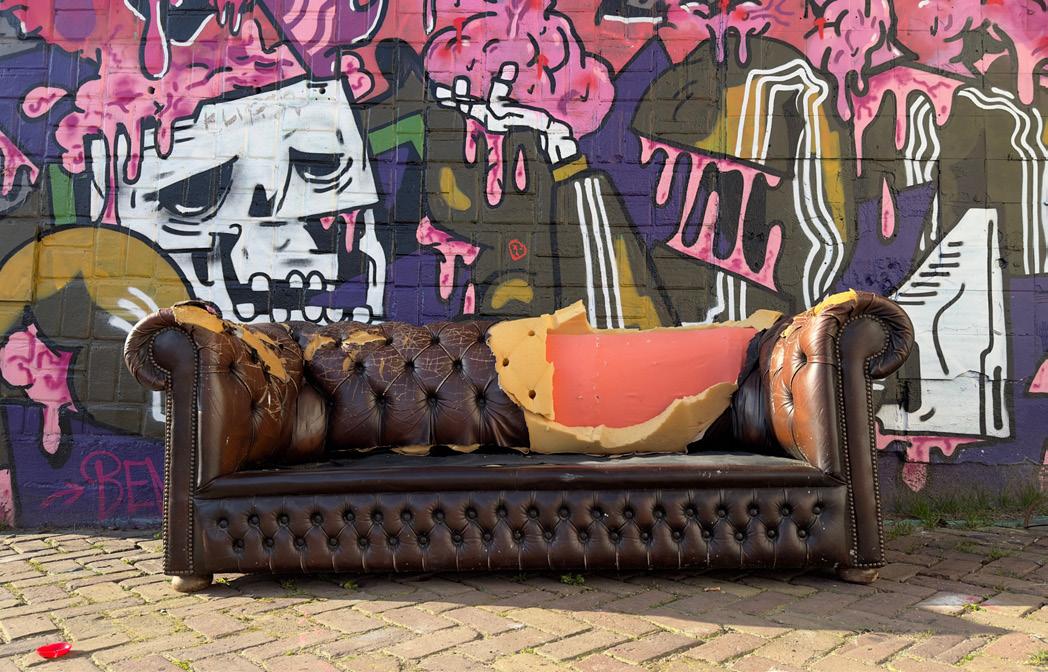
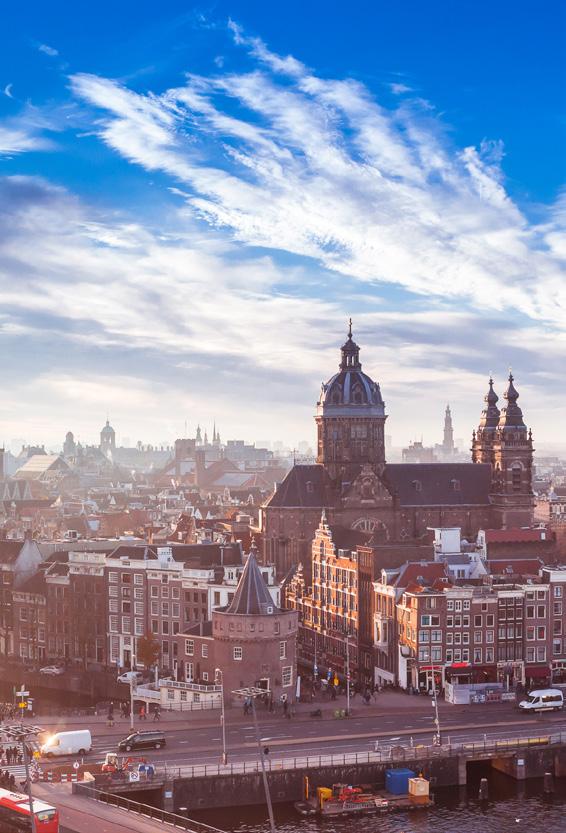
With sand between your toes and a drink in hand, you can watch the sunset over the IJ river throughout the year and appreciate the Amsterdam skyline twinkling in the distance.
As evening falls, the district’s nightlife springs to life. At the bar FC Hyena, film buffs and wine enthusiasts converge in a uniquely gezellig (Dutch for ‘cosy’) atmosphere. You might catch an indie film screening while sipping on a selection of natural wines.
For a more laid-back vibe, the well-hidden café Murmur, also known as a speakeasy for hipsters, promises a tasteful night out, with an occasional live music performance and plenty of good conversation.
Another possible fun route through Amsterdam would take you back towards the centre. For science buffs, you won’t want to miss the Nemo Museum and the lesser-known Micropia found in the ARTIS city zoo.
When your brain is sufficiently full of facts and images of impressively small creatures, and perhaps when your legs have tired a little, take a short walk to the Pension Homeland hotel for a drink by the water.
If you’re in the mood for music in one of the most impressive venues in Europe, head to the Bimhuis situated along the IJ for world-class jazz and world music artists.
But if you’re in need of a slower pace, Amsterdam also offers plenty of tranquil spots to recharge. A stone’s throw away from the Bimhuis is the city’s library, an impressive structure with huge, towering, glass windows, boasting fantastic views of the city.
It also provides a quiet space to work or read a book until late, if you happen to need to dive into some quick remote work.
The sprawling Vondelpark provides a perfect escape, with winding paths, serene ponds, and cafés nestled among the trees. After a leisurely stroll, head to the nearby Museum Quarter. Here, you can lose yourself in the swirling colours of Van Gogh’s masterpieces or explore the vast collection of Dutch Golden Age art at the Rijksmuseum.
For those seeking a cosier experience, Amsterdam’s café culture offers so many options. As a coffee and pastry enthusiast, I have a few recommendations for you: SaintJean, a charming spot known for its plant-based pastries, provides an ideal nook for people-watching with a good book in hand, but it does get quite busy at the weekends. If the autumn chill has you dreaming of more northern skies, seek out the Nordic café Selma’s for their

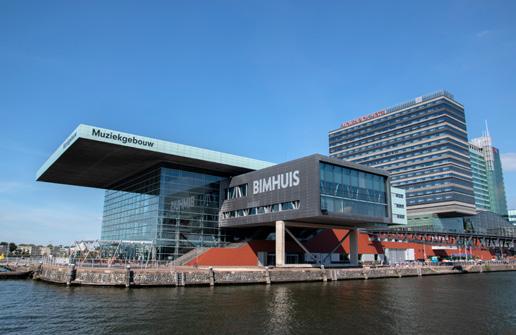
kardemummabullar (Swedish cardamom buns) – a sweet treat that captures the essence of Scandinavian comfort.
To cap off your day, consider a visit to Café Brecht. Its warm ambiance makes it the perfect spot for a final drink and a moment of reflection on your Amsterdam escapades.
By venturing off the beaten path, you’ll discover that Amsterdam is a city that
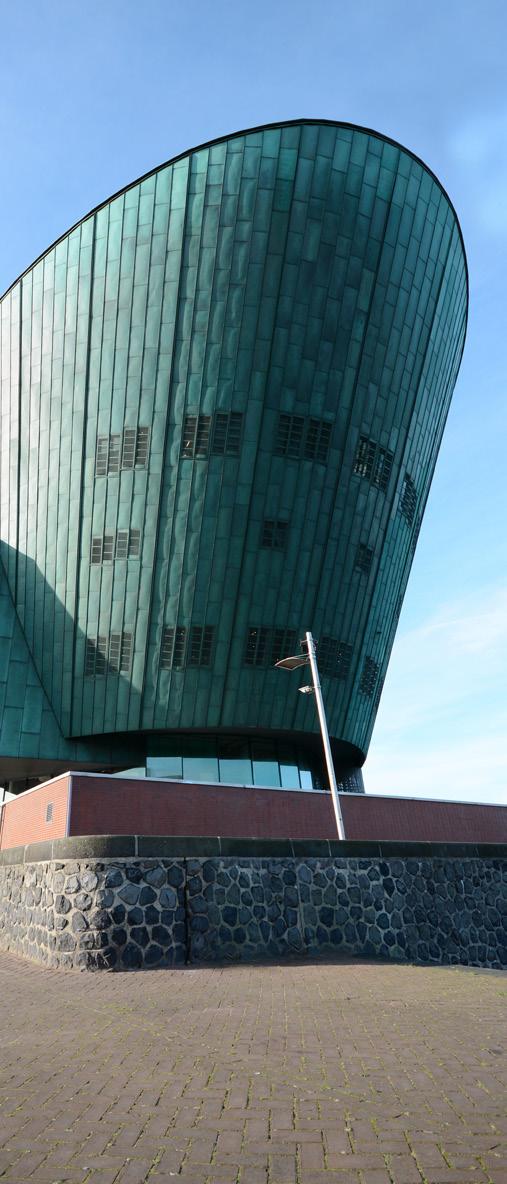
constantly reinvents itself while honouring its rich history, giving you the chance to feel quite at home, or on one of the most exciting adventures, if you let it.
So, on your next visit, challenge yourself to look beyond the guidebooks. Uncover the hidden gems that make this city truly unique, and you may just fall in love with a side of Amsterdam you never knew existed.

Words by Alexandra Alden
New York is a metropolis of constant motion. Hop over, via Amsterdam, to the city that never sleeps if you want to feel like you are in the centre of everything.
“I need to buy new shoes again, these ones lasted a year. I walked along the Chelsea Line, in Brooklyn found a tear...” These are the opening lines of my new song Stonefruit, set to be released on my upcoming album next year. Written during a whirlwind of international concerts, it was inspired by an autumnal stop in New York City, where I performed at the iconic Bowery Electric just in time to see the leaves changing colour in Central Park.
As I disembarked at JFK Airport, a fellow passenger heading to a sci-fi convention in Manhattan mysteriously pressed a handful of googly eyes into my palm, whispering: “Here, take these. You’ll need them.” Confused but intrigued, I ventured into the heart of The Big Apple, brimming with excitement.

New York’s vastness hit me immediately. The towering skyscrapers, the constant buzz of activity – it’s a city that makes you feel like you’re at the centre of everything. Yet, despite its grandeur, New York doesn’t exude superiority. Instead, it pulses with the energy of countless ambitious entrepreneurs and hustling artists, each chasing their dreams.
I’m a firm believer that the best way to experience a city is on foot, and New York, being one of the world’s most walkable cities, beckoned me to explore every inch. Over my 10-day visit, I traversed Manhattan, Brooklyn and Queens, once clocking an astounding 60,000 steps in a single day. My shoes, unsurprisingly, bore the brunt of my urban adventure.

As I zigzagged through Manhattan, I couldn’t help but marvel at how each district has its own distinct personality. It’s like the island is a patchwork quilt of mini-cities, each with its own vibe:
MIDTOWN: This is where you’ll find the New York of postcards. Times Square’s neon playground, the art deco masterpiece that is the Chrysler Building, and the towering Empire State Building. It’s touristy, sure, but there’s a reason everyone flocks here – it’s electric. Say hi to the Naked Cowboy and be sure to give him a dollar.
UPPER EAST SIDE: Think Gossip Girl levels of posh. Museum Mile is here, including the Met, which is basically an excuse to pretend you’re in Night at the Museum
GREENWICH VILLAGE AND EAST VILLAGE: This is where I felt most at home: quirky cafés, vintage shops, and the kind of bars where you might stumble upon the next big thing in music. Washington Square Park is great for peoplewatching – meet poets, play chess and possibly end up having your portrait painted.
SOHO AND LOWER EAST SIDE: If you’re into fashion and want to pretend you’re an off-duty model, this is your spot. The cobblestone streets are lined with boutiques that will make your wallet weep. I treated myself to exactly one (1) overpriced coffee and hurried onwards.
FINANCIAL DISTRICT: Home to Wall Street and the 9/11 Memorial, it’s a jarring mix of suited power-lunchers and sombre tourists. The contrast is striking and very ‘New York’.
CHINATOWN AND LITTLE ITALY: These neighbourhoods bleed into each other in a delicious cultural mishmash. You can slurp noodles for lunch and twirl pasta for dinner, all within a block radius. Of course, I couldn’t resist hitting up some of the classic tourist spots. The Statue of Liberty gave me a little wave (or was that just the wind?); Central
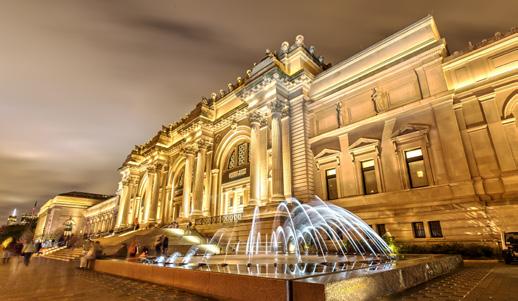


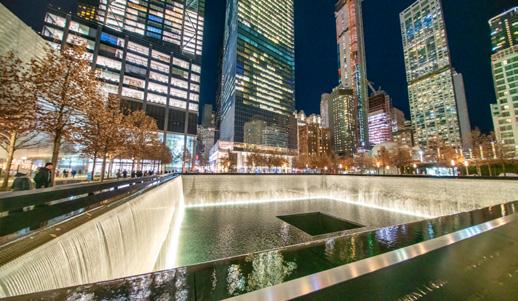

Park provided much-needed green respite; and Top of the Rock offered views that made me feel like I was in a real-life SimCity.
While Broadway remained just out of reach due to budget constraints, I did catch an intimate Novo Amor concert downtown with my cousin and reconnected with friends and family scattered across the city.
New York is a metropolis of constant motion. Sirens wail, traffic hums and construction never ceases. Smoke wafts from gutters, just like in the movies, and it’s not uncommon to stumble upon a film set on any given street corner. It’s a city of smoke and mirrors, always evolving, always surprising.
As I boarded my flight back to Malta, my shoes worn but my spirit invigorated, I realised that New York had left an indelible mark on me. It’s a city that demands to be experienced, one step at a time.
Unpacking my suitcase back home, I found those googly eyes nestled between my city maps and torn-up boots. It turns out that mysterious stranger was right – I did need them after all. They’ve become my quirky souvenir, reminding me that when you’re open to new experiences, every corner holds a potential adventure and every passerby a possible story – just as my time in New York proved to be. suggests


> Late-night dumplings in Chinatown.
> The perfect lox bagel.
> Artistic sanctuaries like MoMA (the Museum of Modern Art) and the Whitney Museum of American Art.
> A long stroll across the Brooklyn Bridge.
> Indie music havens like Sundown Bar, the Owl Parlour and Sultan Room.
> Quaint coffeeshops like Café Regular.
> Countless slices of


Words by Passaġġi
With the launch of MICAS, Malta is about to take a “great step forward” and become a proactive player in the contemporary art world. The newly restored space aims to inspire the nation across generations and kickstart a new chapter as a global platform for both international and local artists.
One of Malta’s most ambitious projects for the arts and culture, the Malta International Contemporary Art Space was officially inaugurated last month with a highly-anticipated exhibition of celebrated Portuguese installation artist Joana Vasconcelos.
The restoration project of the art space brings back to life the 17th-century Ospizio, as well as the Floriana Lines’ Knights-era fortifications, namely the San Salvatore Counterguard and the La Vittoria Bastion, with an intervention that has delivered a multifaceted campus of indoor gallery spaces.
Vasconcelos’s large-scale installations breathe more life into MICAS’s four-storey galleries in a vibrant show that is presented within the beauty of the ‘raw’ building, with natural light flowing throughout its excavated and historic walls.
The iconic element of the MICAS space is its new structure, capped by a monumental roof of welded steel beams that seamlessly overcomes the conflict between the surrounding fortress and the contemporary art museum.
In this dialogue with the Bastion of Provence, the MICAS roof rises vertically and turns into the main façade, highlighting the contemporary character of the intervention in contrast with the existing monument.
Ipostudio of Florence, led by Carlo Terpolilli, together with architecture firm EMDP and architect Hermann Bonnici, were the designers of the steel roof – a structure that has unified the scattered historical elements of the site, namely the San Salvatore Counterguard, the Barbara skewed arch and the La Vittoria Bastion.
As if gently suspended over the ramparts and the fortification skyline, the roof is now visible as a sign of Floriana’s cultural

identity – an unmissable aspect of MICAS’s mission to host international contemporary art.
Internally, the three main gallery floors appear like terraces within the historic Ritirata, in between the bastions and under the same glazed steel roofing.
The roof also provides functionality to MICAS’s ‘terraced’ levels between the bastions, allowing for natural ventilation and lighting, as well as a structure that carries all the systems
for moving, hanging up and lighting the galleries beneath.
Covered with float glass panes, a solar shading system filters the natural light, while internally, the roof is itself the technical machinery that allows for different exhibition scenarios, with the void between the beam intersections used for LED strip lighting systems.
With construction stewarded by the Restoration Directorate, the
works at the former Ospizio complex have proven to be of varying and increasing complexity.
“We faced extraordinary challenges in a relatively short period of time – higher costs resulting from the pandemic and war in Europe, apart from supply chain disruptions, yet MICAS is now here,” said Norbert Gatt, director-general of the Restoration Directorate.
“Indeed, its tiered galleries prove to be the ideal setting for its ambitious


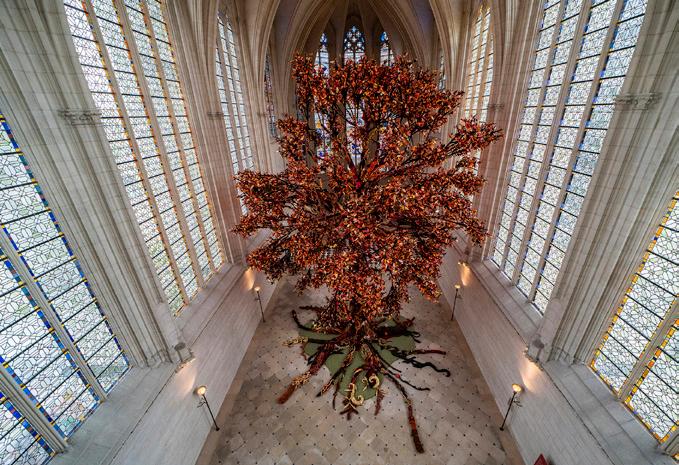
opening exhibition by the celebrated Vasconcelos.”
Celebrated furniture and interior designer Francis Sultana, who has served on the MICAS board since its inception, is driven by “exciting times ahead!”
The opening of the museum “heralds a bright future for Malta at the heart of the international world of contemporary art,” he said, describing MICAS as a place that will “inspire our nation across generations”. From launching the project with Ugo Rondinone to its first show with Vasconcelos, “Malta welcomes a new chapter as a global platform for both international and local art,” Sultana said.
“MICAS will strengthen Malta’s cultural infrastructure by providing a platform for contemporary art and internationalisation. With its launch, the island is about to take a great step forward and become a proactive player in the contemporary art world,” said MICAS CEO and board chair Phyllis Muscat, who has stewarded the project from the start.
“Most importantly, we have focused on an international programme of contemporary art that will delight both motivated viewers and lovers of art who visit Malta, as well as those who will enjoy exploring a rich, historical landscape and stunning contemporary architecture.”
MICAS’s artistic director Edith Devaney has described the opening exhibition as “both colourful and exuberant”, presenting a subject matter of wide resonance and relevance to the museum’s visitors.
“Vasconcelos’s appropriation of traditional crafts in the making of many of her works will echo several cultures, including her own in Portugal, but also that of Malta.
“The decision to present her work in the ‘raw’ building, before the internal museum structure is installed, thereby revealing the natural beauty of the excavated and historic walls, with natural light freely flowing throughout, will also be a celebration of this new heritage project and its contemporary architecture,” Devaney said.
Set against four major signature works, which resonate with the more contemplative side of human existence – Tree of Life, The Garden of Eden, Loft and Valkyrie Mumbet –this exhibition also presents her more conceptual art, which focuses on the quotidian and the home.
Like all Vasconcelos’s works, gender and cultural politics are evident – with the materiality of the art also playing a role. Constructed with everyday nonprecious materials, often associated with the domestic, Vasconcelos creates works of monumental scale and significance.


The exhibition illustrates the way the artist explores the challenging aspects of daily life and “how this creates a desire and need to connect with the spiritual side of our existence in the quest for both solace and inspiration.
“With her ability to present conceptual art in a celebratory and sumptuous manner, and her deep commitment to engaging with communities and schools in the exploration of the visual arts, a Vasconcelos exhibition presents the perfect opening exhibition for MICAS as it invites visitors to step into her magical vision and, in doing so, explore the museum and its campus,” Devaney said.
“Like all international contemporary artists Malta Contemporary works with, it is important that each engages with Malta and its culture and that this experience informs and inspires their approach to the selection and



Our UNESCO World Heritage Capital is a treasure trove of historical, cultural and architectural marvels awaiting to be explored.





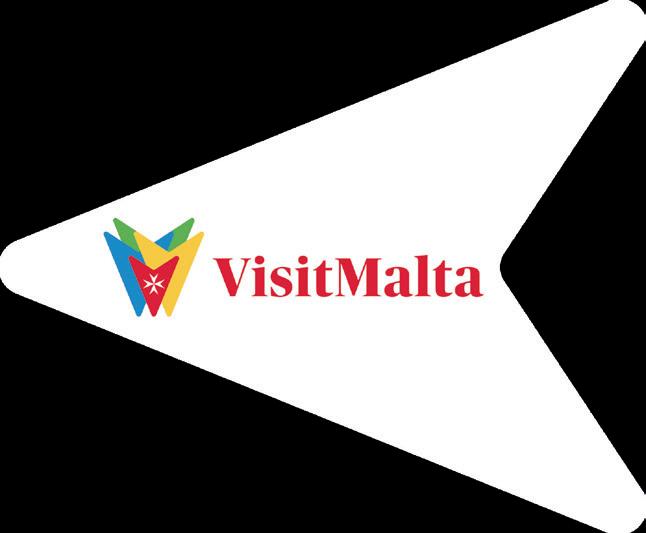
“MICAS will strengthen Malta’s cultural infrastructure by providing a platform for contemporary art and internationalisation.”
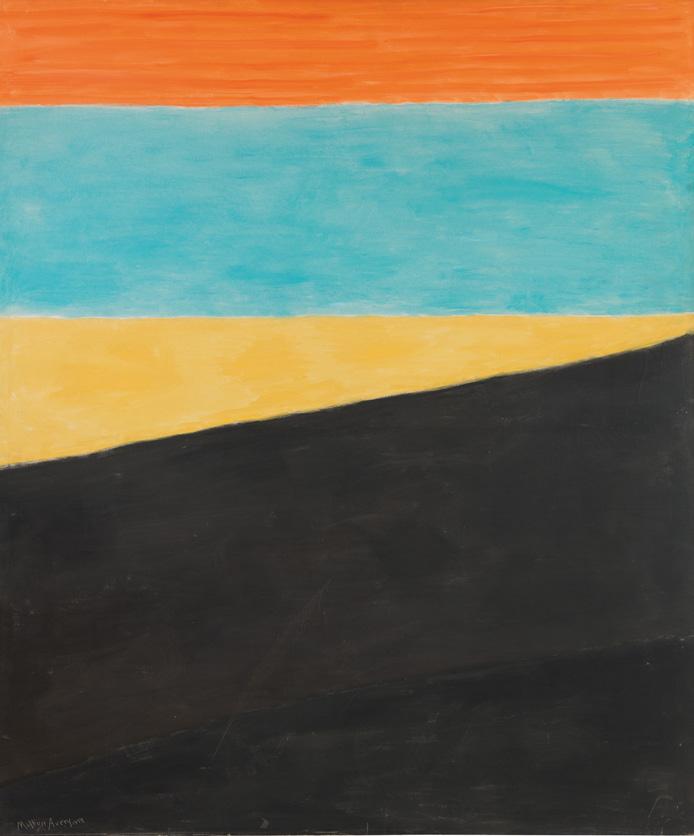


placement of work in the galleries and grounds.
“Vasconcelos formed a deep connection with Malta and its history while developing this exhibition with Malta Contemporary,” she said.
“A pillar of the upcoming programme will be to showcase the work of global artists, who have earned recognition from their singular approach to creating art,” Devaney continued.
Future exhibitions will feature works from master colourist and respected American artist Milton Avery – who influenced artists like Barnett Newman and Mark Rothko – and Reggie Burrows Hodges, with a new exhibition of work, much of which has been created for Malta Contemporary.
A core body of paintings from Avery will mark a first for Malta in 2025: rarely has his work been seen in Europe.
Together with Harold Ancart, March Avery, Gary Hume and Nicolas Party, among others, the exhibition will be a captivating study of how contemporary art remains rooted in Modernism, revealing these artists’ debt to Avery’s compositions and unique approach to colour.
In 2025, Malta in Focus will host the island’s leading contemporary artists, including Caesar Attard, Austin Camilleri, Joyce Camilleri and Anton Grech, illustrating the depth and richness of contemporary Maltese practice.
“This marks MICAS’s commitment to regularly explore, showcase and celebrate Malta-based art at its highest form and bring it to a wider international stage,” Devaney said.
In 2026, African-American artist Burrows Hodges will bring a visual narrative that explores questions of identity, community and memory.
Leading up to 2024, MICAS has displayed works in several outdoor spaces across Malta from artists including Conrad Shawcross, Pierre Huyghe, Cristina Iglesias and Michele Oka Doner.
Words
by Din l-Art Ħelwa
DLĦ is the National Trust of Malta, an NGO founded to safeguard the country's historic, artistic and natural heritage.
Named one the five most beautiful cemeteries in Europe, the Msida Bastion Cemetery and Historic Garden merits a visit in this month of All Souls’ Day. Peer into the painstaking research by volunteers to dig up the stories of who was buried there as they piece together the broken slabs and build a better picture.
Do any of you happen to have an ancestor called George Mapstone, who died in the mid-19th century? His headstone is just one of the many mysteries at the beautiful Msida Bastion Cemetery and Historic Garden in Floriana, which a dedicated team is trying to solve.
The garden, formerly known as the Msida Bastion Cemetery, was in 2014 named one of the five most beautiful cemeteries in Europe by the National Geographic Society –a well-deserved honour. It was the Protestant cemetery in Malta from 1806 – 1857.
Hundreds of British and foreign servicemen, officials, businessmen and their families were buried there until it filled up and its role had to be taken over by Ta’ Braxia Cemetery on the outskirts of Pietà.
Located on the fortification once known as St Philip’s Bastion, outside the Valletta boundaries, the garden now hosts a visitors’ centre and bazaar indoors, as well as offering a carefully manicured lawn, which is used by the NGO that runs it, Din l-Art Ħelwa, the National Trust of Malta, for dozens of events every year.
However, peer beyond the lawn and through the numerous centuries-old trees towards the bastion wall overlooking Marsamxett Harbour and you will realise there are still rows and rows of graves and monuments there.
Unfortunately, the cemetery was abandoned for years –bombing during World War II exacerbated the damage – and many of the graves and monuments were smashed in, with much of their marble and ornamentation going missing. Pieces of stone were dumped on top of each other, and weeds grew thickly, obliterating some of the engraved names. Unfortunately, only a third of the monuments survived.
Over the years, the registers relating to the burials were lost, and in 1930, Capt. Charles Zammit – the son of renowned Maltese archaeologist Temi Zammit – surveyed the cemetery and reported details of 445 people who had been buried there, although he missed dozens of graves, which have since come to light.
Were it not for the NGO, so much information would have been lost forever. But trying to put the pieces together is

like trying to do 200 jigsaws at the same time – without a picture to guide you. Nevertheless, the painstaking work of matching each fragment of stone, each type of font and engraving is paying off.
“We have identified 120 more names since we took over 44 years ago,” site warden Paolo Ferrelli explained. “Only recently, we found a piece of stone saying: ‘Margaret C… Wife of Sgt. George…’ The rest is missing, but we can now start doing research to find out more about who she may be.”
Paolo estimates that the real number of people buried there could be as high as 900, two-thirds of whom were under the age of 40 when they died. He can draw on the assistance of several people in the UK, who check archives there, as well as a number of locations in Malta, such as the National Archives, the library and the Anglican Church.
Paolo also ploughs through the online archives of Gentlemen’s Magazine, published between 1763 and 1898, whose hundreds of pages chronicle the major

events involving British people overseas during the heyday of the British Empire. However, there is still no information available about George Mapstone, with a headstone that only says: “Sacred to the memory of…”
“We simply cannot find any mention of him in any of the usual places! And there are several other cases like him,” Paolo said. He has a small army of volunteers, who help with the upkeep of the garden and the cemetery, as well as some 140 students every year, some Maltese during their CSR stint, and foreigners, mostly interns. Restoration is currently under way on six monuments, thanks to the help of his volunteers.
The monuments bear symbols representing freemasonry, Biblical motifs, Greek and Roman styles and more, and the man known as the father of the Maltese language, Mikiel Anton Vassalli, is also buried here.
“My dream is to put all the information together in a way that would allow more research to take place. But for the moment, we are still working on what we already know about,” Paolo said.
The Msida Bastion Cemetery and Historic Garden is open to visitors from Monday to Saturday and the first Sundays of the month, from 9.30am to noon. Entrance is €2 per person except on the first Sunday of the month when admission is free.

“It is like trying to do 200 jigsaws at the same time – without a picture to guide you.”
Tucked away and known also as the Garden of Rest, the Msida Bastion Cemetery and Historic Garden overlooks Manoel Island, lying just off the Central Public Library in Floriana. It is a 14-minute walk from Valletta.
Take any bus towards the capital city and stop at Mall in Floriana, which is the nearest you can get. Cross the public garden and walk down two short blocks to the Police Headquarters; then follow Triq Vincenzo Dimech until you reach the gate.

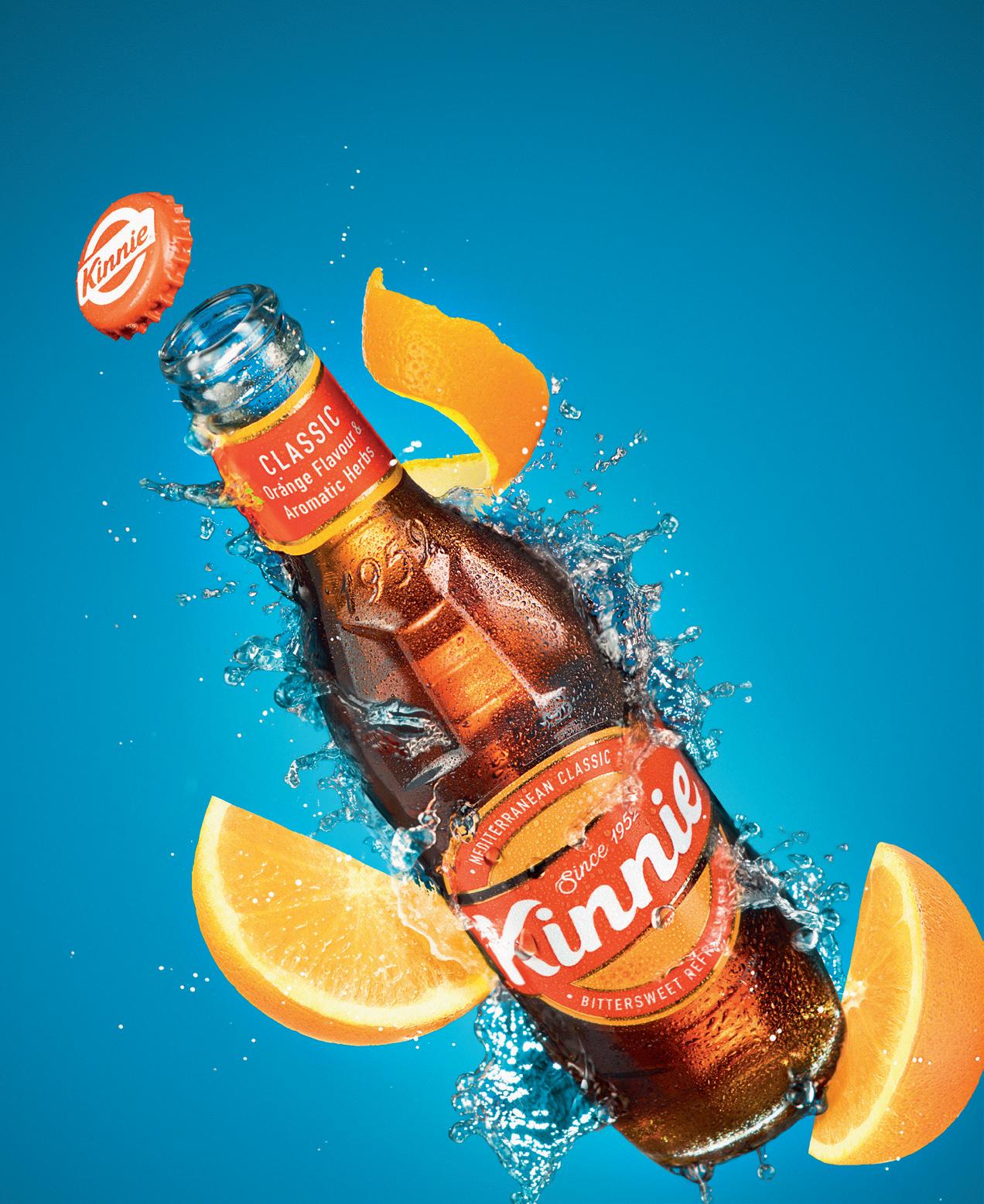
Words by inkontru.app
Malta and Gozo enjoy a calendar brimming with unmissable arts and cultural events. From pop spectacles and operatic extravaganzas to immersive exhibitions and festivals, there’s something exciting to do and see whenever you visit. To help you plan, inkontru.app has hand-picked some of the most anticipated events for the month ahead.

Malta Book Festival
When: 6th - 10th November
Where: MFCC, Ta’ Qali
Explore Malta’s literary scene at the annual Book Festival, this year themed Binding Worlds. Meet celebrated authors, join fun workshops, and discover the craft of bookmaking. A must for bookworms of all ages.
Valletta Early Opera Festival - Il Re Pastore
When: 8th - 10th November
Where: Teatru Manoel, Valletta
The Valletta Early Opera Festival is a recent addition to Malta’s classical music scene, dedicated to reviving works from the canon of early opera. This year features an opulent production of Mozart’s underappreciated gem, Il Re Pastore, a story of war and star-crossed lovers that the legendary composer penned when he was but 19 years old. Attendees can enjoy this rare performance at the historic Teatru Manoel, one of Europe’s oldest and most charming theatres. Under the guidance of Italian maestro Giulio Prandi and director Tommaso Franchin, prepare for an enchanting evening filled with exquisite arias in a historic setting.

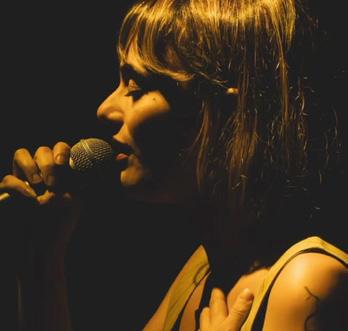
Kym Pepe Live
When: 9th November
Where: Spazju Kreattiv, Valletta
Local alternative music darling Kym Pepe delivers an intimate performance of haunting melodies and thoughtprovoking lyrics. A fresh voice in Maltese music not to be missed.

The Music of Andrew Lloyd Webber
When: 23rd November
Where: Teatru Aurora, Gozo
The Gozo Youth Orchestra, backed by a five-piece band and a 16-piece choir, performs iconic hits and much-loved deep cuts from Andrew Lloyd Webber’s legendary musicals.
When: Until 19th January, 2025
Where: MUŻA, Valletta

When: 19th November
Where: MCC, Valletta
Steve Augeri, former lead singer of Journey, brings his powerful voice to Malta. Sing along to classic hits and fan favourites from the iconic arena rock band and the frontman’s extensive solo catalogue.

When: Starts 28th November
Where: Malta Society of Arts, Valletta
Malta’s top photography competition returns, showcasing winners across diverse categories. A must-see for photography lovers, celebrating both technical mastery and creative vision.
London-based artist Barnaby Barford presents TOPIA, a unique exhibition of 1,000 handmade, fine bone china miniature buildings inspired by Malta’s characterful shopfronts.

Verdi Requiem
When: 23rd November
Where: MCC, Valletta
Verdi’s Requiem will resonate anew through a masterful performance by the Chorus of the Accademia Nazionale di Santa Cecilia, the Malta Philharmonic Orchestra and KorMalta, under Pier Giorgio Morandi’s baton.

Sam Alekksandra Exhibition
When: Until 31st November
Where: 2B Gallery, St Julian’s
In her debut solo exhibition in her home country, Maltese artist Sam Alekksandra explores an oscillating world of pain and pleasure through an immersive experience in contemporary art.

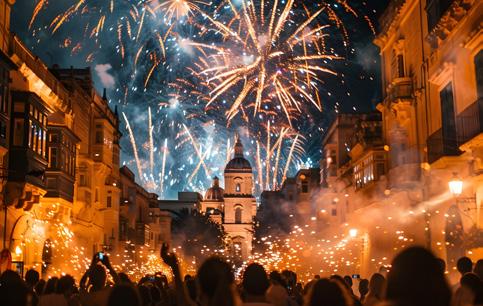
Traditional festas are woven into the cultural fabric of the Maltese Islands. These lively celebrations bring towns and villages together in honour of their patron saints, with week-long festivities featuring lavishly decorated churches, lively marching bands and fireworks that pop and fizz against the night sky.
While most of Malta’s festas take place between May and September, there are a handful that are scattered throughout the rest of the year, offering visitors a chance to experience the charm of these traditional Maltese celebrations outside peak season. One such gem is the Feast of the Immaculate Conception in Bormla, which runs from 28th November to 8th December, and sees the Bormliżi (Bormla’s residents) go all out to put on one of Malta’s most fervent celebrations.
During the feast, Bormla’s 17th-century church is adorned with multi-coloured lights on the outside, while its interior is draped in rich red damask, creating a dramatic backdrop for its awe-inspiring art, religious relics and saintly sculptures. The church’s dome, with paintings by renowned Maltese artist Giuseppe Calì, and the striking silver-clad statue of the Virgin Mary, crafted by local artist Abram Gatt, are a sight to behold.
On 8th November, the titular statue of the Virgin Mary is carried in a grand procession through the town’s streets, led by St George’s Band Club. Locals follow in reverence, while onlookers gather to witness the moment with pride.
No festa in Malta is complete without fireworks, and Bormla’s display is traditionally nothing short of spectacular. It takes place outside the city gates, and talented pyrotechnicians are known for putting on quite the show, often synchronising their fireworks with music, ranging from classical pieces to modern pop and film scores. The colourful bursts light up the harbourside town, creating a truly eye-dazzling spectacle for all.
Betrayal and Vengeance:
The Slaves’ Conspiracy of 1749 in 19 historical drawings
Join Heritage Malta in commemorating the 275th anniversary of the failed slaves’ conspiracy revolt of 1749, with this fascinating exhibition, held at the Inquisitor’s Palace and National Museum of Ethnography in Birgu until 31st March, 2025.
Learn a new skill, immerse yourself in traditional Maltese crafts, or try your hand at something completely different at these upcoming workshops and masterclasses. This month, inkontru.app shines the spotlight on the ŻiguŻajg International Arts Festival for Children and Young People with these fun workshops open to the public at Spazju Kreattiv in Valletta as part of the exhibition But I See Beauty and Wonder.
Using external effects on the art medium
When: 9th November at 10.30am
Led by Italian artist Rebecca Ranieri, this workshop invites kids aged seven to 12 to create hidden images in their paintings using lemon juice and other materials, which are then revealed with the magic of torchlight.
Clay Relief: Turning Fears into Beauty
When: 16th November at 10.30am
Greek artist Ioulia Chante guides young participants to transform their fears into expressions of creativity. In this workshop, they’ll shape clay, turning the ugly and scary into beautiful, one-of-a-kind creations.
Colours and Robots: Painting with Art Machines
When: 23rd November at 10.30am
Join artist Sarah Maria Scicluna for a fun workshop where children get to create their own paintings with the help of pen plotters, blending creativity with technology for exciting results.
Colours After the Gloom
When: 30th November at 10.30am
In this hands-on embroidery workshop led by Turkish artist Ebru Cinar Erdogan, children will learn basic stitching techniques to craft colourful designs and experience the soothing effects of thread work, while creating beautiful patterns.

Order, pay ahead and collect just outside Malta International Airport


As part of this year’s ŻiguŻajg, curator Melanie Erixon presents But I See Beauty and Wonder, a special exhibition at Spazju Kreattiv in collaboration with Arts Council Malta. She offers a peek into what to expect.
COULD YOU INTRODUCE US TO THE EXHIBITION?
Our exhibition explores the transformative power of art, its ability to uncover beauty in the most unexpected of places, as well as to reveal hidden allure in things that may at first seem ugly, unpleasant, or unsettling.
WHAT CAN KIDS AND FAMILIES EXPECT IN THIS EXHIBITION?
The exhibition presents artworks by 13 local and international artists, spanning various media, such as painting, sculpture, video and interactive installations. In addition, themed workshops for children will be hosted throughout.
Visit ziguzajg.org and the ŻiguŻajg Facebook page for more details.
As a deeply Catholic island, Malta continues to celebrate holy days with reverence. Following All Saints’ Day on 1st November, the island honours All Souls’ Day on 2nd November, a solemn occasion in remembrance of the dead, which continues to reflect a strong belief in the afterlife and the significance of praying for the souls of those departed. In the morning, many Maltese attend special Masses dedicated to their loved ones, and it’s also common for families to visit cemeteries, where they tend to graves with care, often leaving fresh flowers and lit candles.


This is your personal guide to the latest art, culture and heritage events in Malta and Gozo. More than just a calendar, it connects you with exciting events, artists and creators through interviews and video features. Find details easily, get directions and purchase tickets – all in one place. Need a ride? Book a cab through the app and share your plans with friends and family with ease.

DISCOVER A WORLD OF ENDLESS SHOPPING OPPORTUNITIES










What’s happening and who’s been sighted - and papped - on the Malta scene...


Belgian-Dutch pop girl group K3 visited Malta to film their new movie, K3 en Het Lied van de Zeemeermin (K3 and the Song of the Mermaid), which promises a blend of music, magic and underwater adventure. With its stunning clear waters, sandy beaches and historic charm, Malta offered the perfect magical backdrop for this movie.

Oscar-winning actor and film-maker Mel Gibson visited Valletta in September and is said to be working on a potential limited television series about the 1565 Great Siege of Malta. Photos: Malta Film Commission.


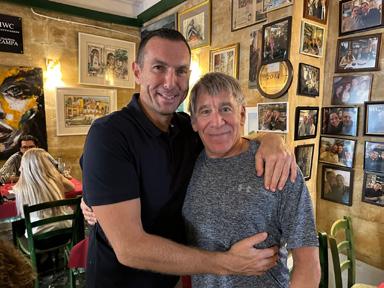

American actress Scarlett Johansson, who will star in Jurassic World Rebirth,partly shotinMalta,wasspottedat jewelleryshopGoldPriceMalta inZacharyStreet,Valletta, with Shaun Said.
The Twilight Saga actress Kristen Stewart (below, centre) was seen fine-dining at Casa Ellul’s Risette Restaurant in Old Theatre Street, Valletta.

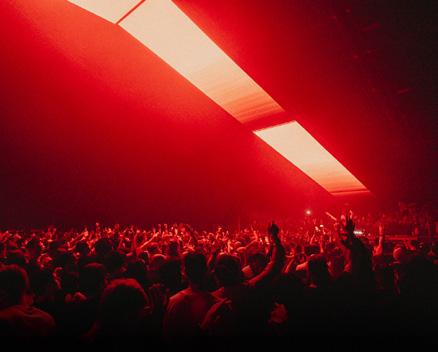


DALMA

MFCC, Ta’ Qali
Dalma Festival returns for a second edition on 6th and 7th December at MFCC, Ta' Qali, for a pulsating techno odyssey. After last year’s much-talkedabout debut, excitement levels for the 2014 event are running high. This year's line-up features Amelie Lens, I Hate Models, Paula Temple B2B SNTS, BLK., Oscar Mulero & DVS1, BIIA, Dave Clarke and many more, making this an unmissable techno celebration.
dalmafestival dalmafestival.com
SPAZJU KREATTIV, MALTA’S NATIONAL CENTRE FOR CREATIVITY
Castille Place, Valletta
Elevate your holiday experience in Valletta with a curated blend of creativity at Spazju Kreattiv. Nestled in the heart of Malta’s capital city, Valletta, Spazju Kreattiv is a cultural hub that celebrates art and creativity through a multidisciplinary programme of events, including visual arts exhibitions, performing arts and the only arthouse cinema in Malta. If you’re in Valletta, drop by and explore its unique spaces that seamlessly blend historical charm with contemporary creativity.
spazjukreattiv kreattivita.org
Spazju Kreattiv, Valletta
ŻfinMade is a biennial programme that invites six choreographers from Malta to create a series of solos and duets with the ŻfinMalta company dancers, each responding to the theme ‘Our bodies in a digital world’. ŻfinMade is presented as three works per night, performed over four nights on 5th – 8th December.
spazjukreattiv kreattivita.org
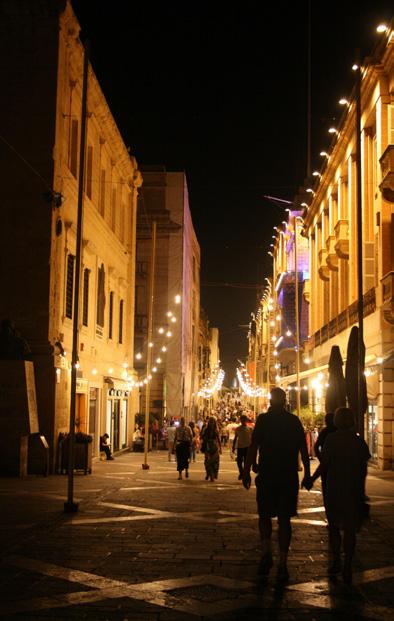
There’s nothing quite like a nightcap in a jazz bar. Valletta has most of the live jazz venues around, with the likes of Offbeat, Babel, and Vilhena Band Club just outside the capital. There are also lots of pop-up events, with great jazz musicians too – just have a look online as these are normally posted closer to the date, and keep an eye on local listings to catch one of these spontaneous gigs. If you’re considering being around in the summer, there’s also the spectacular jazz festival, and plenty of others for whatever quenches your music taste: baroque, breakbeat… you get the gist.
Words by Sam Vassallo
Malta is much like a professional boxing midget: it’s small but packs a punch. This cosmopolitan island has lots to offer everyone. And here’s what’s trending this season...

Malta’s art scene has planted itself firmly into the contemporary circuit. After its milestone inaugural biennale earlier this year, attending a gallery opening, visiting an exhibition, or watching a performance in one of the beautiful historic art venues is a great way to spend an evening. Check out places like 2B Gallery in St Julian’s, R Gallery in Sliema, Spazju Kreattiv, Valletta Contemporary and the Malta Society of Arts in the capital city, which always has a packed schedule of visual and sonic works. More recently, MICAS, Malta’s first large-scale contemporary art space, has just opened its doors (see story on p.28).

Winters in Malta aren’t hellishly hot like summer, so it isn’t such a crazy idea to rent a boat and tour the islands with a beautiful warm sun on your face. It’s no wonder more people are opting to rent one out for a day or two. And you may even benefit from off-season offers, while definitely enjoying quieter bays. Sailing is definitely more popular due to the sheltered nature of the boat and the wind conditions. Try Gozo’s Mġarr ix-Xini for a raw experience, or berth in Ramla l-Ħamra for a snack at the little shack on the sand – it will be far less crowded in winter. A meal at Boathouse in Xlendi can tick the sundown trend box too if you look out to sea and watch a good day come to an end.

Sustainability isn’t just a buzzword. Many places now prioritise locally sourced ingredients, reducing waste while supporting Maltese farmers. For example, Noni in Valletta works closely with local farmers and fishermen to source fresh, seasonal ingredients while minimising food waste. In Rabat, Root 81 offers a unique dining experience, with dishes inspired by foraged and organic produce. As travellers become more eco-conscious, the demand for sustainable lodging options has surged, and hotels aiming to offer responsible luxury while reducing their environmental impact are on trend and growing. Some of Valletta’s boutique accommodation is going green. These urban oases are conserving energy, minimising waste and preserving local heritage, while the larger properties, with their extensive gardens, like The Phoenicia Malta, capitalise on nature and are committed to ensure these serene spaces continue to thrive. Meanwhile, local fashion designers like Luke Azzopardi and Saz Mifsud focus on the importance of home-grown creations, a slow-fashion ethos and excellent craftsmanship to produce garments that are timeless and lasting.







22nd Oct 2024 - 19th Jan 2025
Muża - The National Community Art Museum
Words by Lisa Gwen
A curator, Lisa works in the design and architecture industry.
‘London’s Soho in Malta…’ or so it has been called, Ħamrun has its own nightlife scene, and its inhabitants are proud to show it off as they organise their regular nights out on the town.
I wouldn’t blame you if that opening line sounded befuddling. It would be, unless you’ve lived, or at the very least, had a thorough ‘experience’ of all things Ħamrun.
Let’s face it, Ħamrun has a rep, and not the best one at that. It never makes the headlines for the right, fun, or silly reasons, which we’d all rather be reading. And you wouldn’t really expect to find the words ‘Ħamrun’ and ‘nightlife’ in the same sentence because it is not the first place you would think of to spend an evening on the town. The mecca for that in Malta is Paceville, and now even Valletta, while Sliema and Buġibba also have their fair share of watering holes and entertainment on offer.
But there’s decidedly something about Ħamrun; an inexplicable allure, which I’ve always found incredibly captivating. Perhaps it’s the old ‘schoolness’ (if I’m allowed a little poetic license) of the environs: Ħamrun is one of the few towns in Malta that has an arterial core – St Joseph High Street – which has remained practically unaltered over the past 70 years. In fact, there are still a number of old, original shop fronts brandishing authentic signage in evidence, including the British Army and Navy Bar, Johnny’s (previously St Joseph Bar) and Valentine Hall on High Street.
These shops and bars act as a delectable counterpoint to the more staple and somewhat nostalgic eateries, like Café Tivoli or Café Elia, or the more modern and au courant names, like GUTZ, Dallas, and perhaps the more infamous, Dallas 2000.
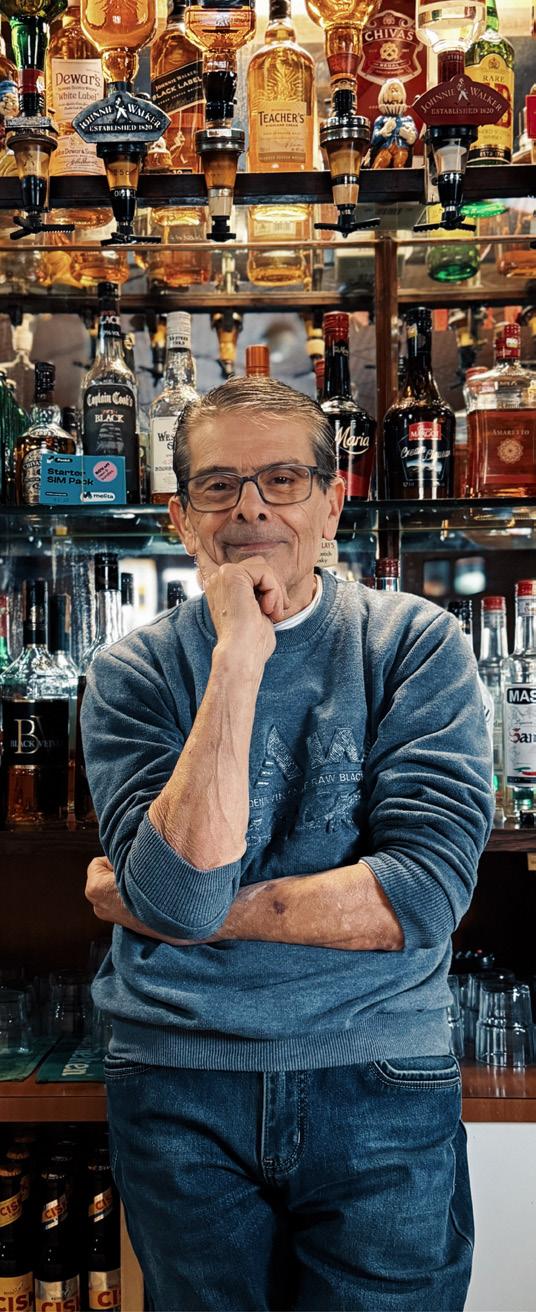


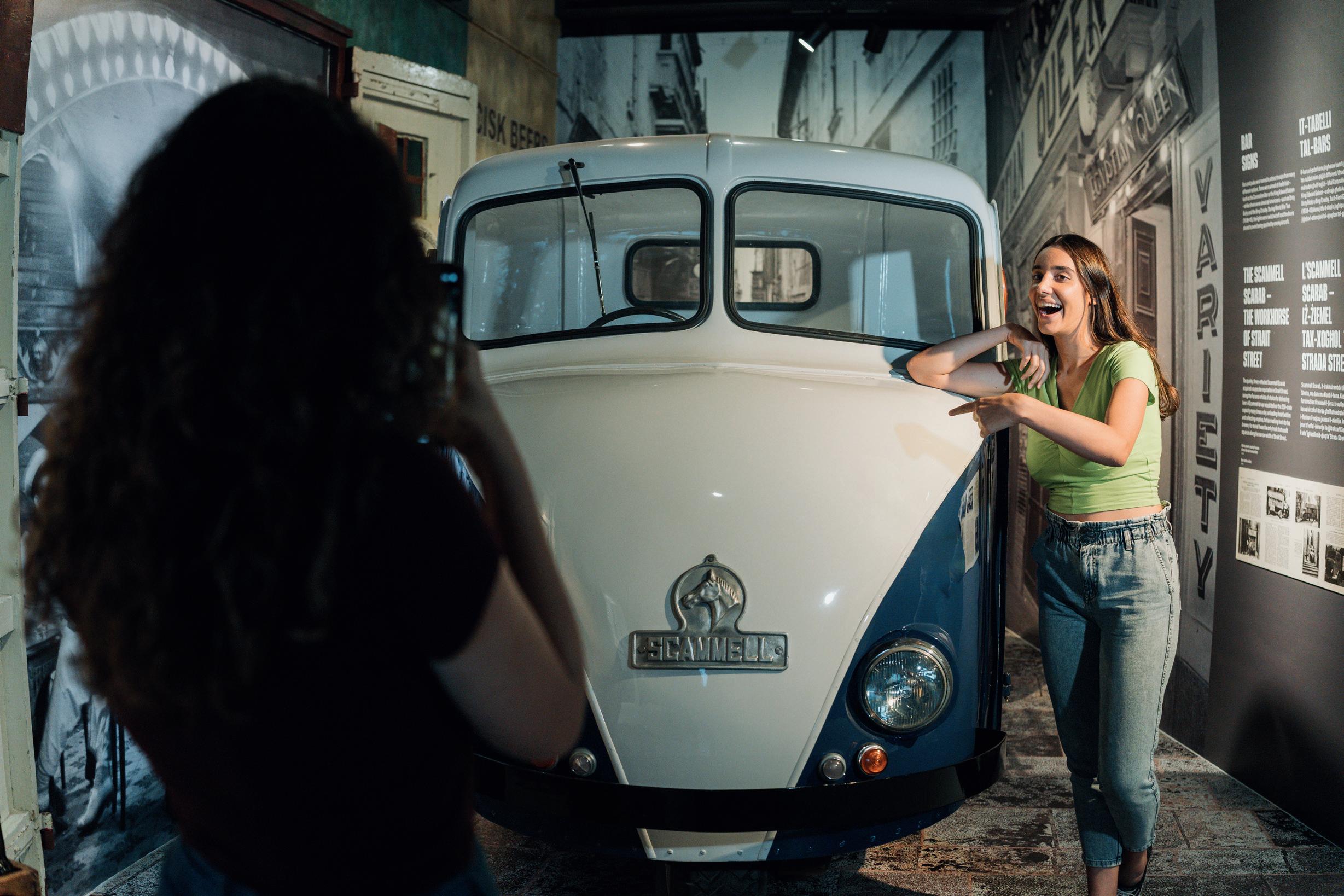
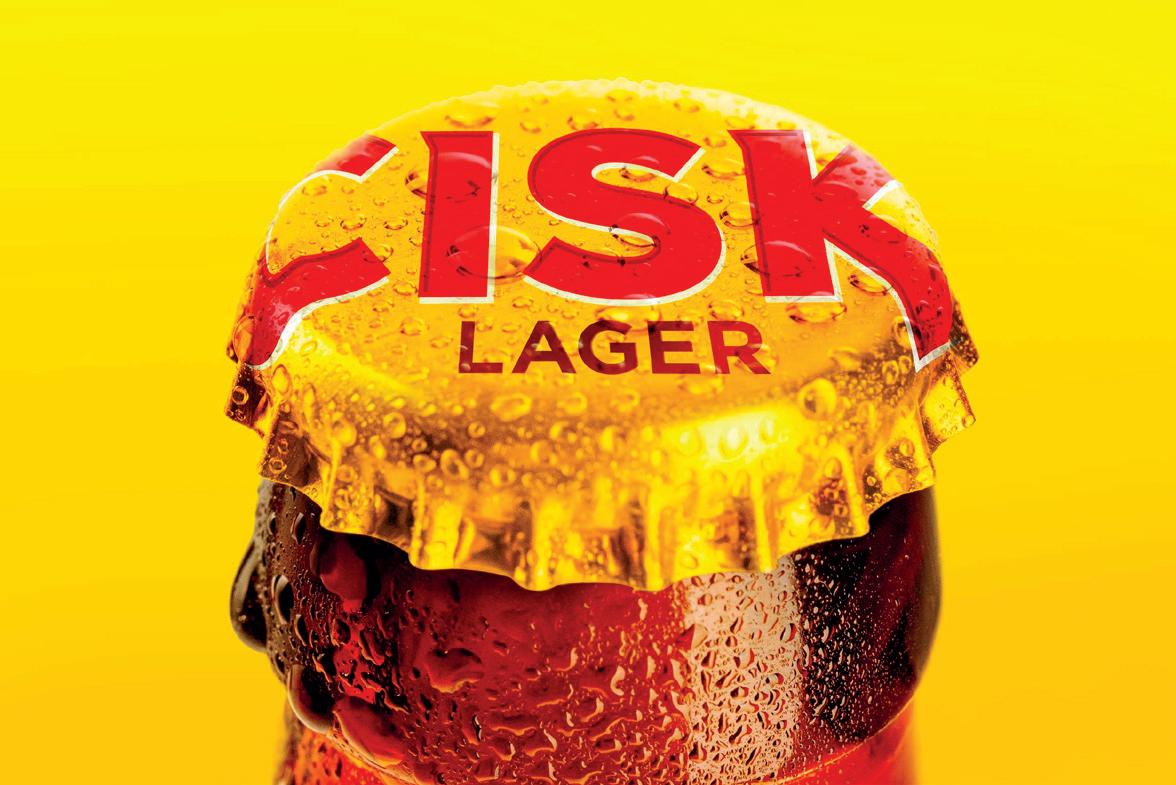


But it’s the unexpected, out-of-context and positively quirky places that have a strange hold on me – these include Teasers Bar, the Naughty Horse, Paris Lounge (which couldn’t be less Parisian if it tried), or even Il-Bokkin. And here, I haven’t even hinted at the flourishing number of establishments specialising in multicultural cuisine – Afghan, Colombian, Eritrean, Indian, Chinese, Japanese, you name it!
The thing is, if I wanted to, I’d never need to leave Ħamrun –I’ve got it all on my doorstep. And that means within an easy 15-minute walk from my house. It’s no wonder that after a decade, I call myself, quite proudly, a Ħamruniża. Actually, I’ve taken this self-appointed title a step further.
I’ll explain. It all started with the coordination of a series of photo-walks: an organised meeting of photo-happy individuals (mostly strangers), with a specifically devised and defined trajectory that includes a number of scenic spots, peppered with scrumptious morsels of information about the



locale. Several of these photo-walks have taken place over the years, with artists visiting the island as part of a residency programme and even with students from the Malta College of Arts, Science and Technology (MCAST).
This penchant of mine for organising events and activities, and ultimately for bringing people together, culminated with the first VSG pub crawl some seven years back. VSG = Viva San Gejtanu, and San Gejtanu, or San Gaetan, is the patron saint of Ħamrun and the star of the annual feast.
This takes place bang on in the middle of summer –generally just a couple of days before the epitome of all feasts and public holidays in Malta – Santa Marija on August 15. Just like Ħamrun, its feast too has a rep; one that is divided neatly down the middle, in colour, as well as political and devotional affiliation. It presents the most pristine of backdrops and faultless of excuses for an organised event of sorts.
VSG is not your traditional pub crawl – it is highly structured, and it works like clockwork, including nine stops in five hours, or thereabouts. Both band clubs, both political party clubs, and my personal favourites –Teasers (to begin with), and my beloved Johnny’s (to seal the night) – plus another few along the way, are all stops on the VSG.
As an aside, Johnny’s is the most delightful time capsule of bars; the kind of place that is almost exclusively frequented by older gentlemen, but one which is full of quirks: the panelling on the walls, the three separate doorways on three different roads, the more than animated conversations, the poster of Jesus on the wall. It’s just a little magical – like an orchestrated Wes Anderson scene, with a brown filter, except it’s the real deal.
Back on the track, timing is everything, which is why everyone is sent a detailed schedule in advance, including what not to wear – because, let’s face it, we can’t have anyone dressed in red or blue – plus all the stops and corresponding timeframes. Invitees are free to join at any point, knowing precisely where to find the group at any given time. Suffice to say, VSG has become a highlight, which I earnestly look forward to and start planning weeks in advance.
From this annual highlight, and from an ever-increasingly diverse number of people being attracted to and making this town their home, a small group, which has playfully been named the ĦamruniŻi, has come together. It’s a group of misfits: a few of us Maltese; many of us not; mostly artistic, driven and creative – keen to contribute to the evolving identity of Ħamrun, as well as the burgeoning nightlife within our immediate vicinity.
Meeting every four to six weeks, it is somewhat surprising how our evenings always seem curated, thematic – from an aperitivo at the band club, to bingo at Valentine Hall; from karaoke at Paris Lounge, to te fit-tazza and whiskey at Johnny’s.
Of course, there is Sliema, Paceville and even Valletta. But Ħamrun is in a league of her own. Yes, she’s a she. And she definitely has a rep.
Words by Passaġġi
Nobody was born with a spatula in their hands, says Chef Adam Demanuele from The Seafood Market Grill in Gżira. He won’t
share all
his culinary secrets here, but he does reveal
how
he ‘hypnotised’ his wife with his first meal for her.
THE FIRST MEAL YOU EVER PREPARED AND HOW IT TURNED OUT…
The first meal I cooked for clients as a private chef turned out pretty well, but I had rehearsed 10 times! It was a pumpkin risotto with saffron and pressed pork belly, a trio of lamb for mains – rack of lamb, lamb sausage and lamb shank (without the bone) – and lamb jus, followed by a baked lemon tart for dessert. It was a little heavy on the stomach, but considering I was only 17, I think I did well.
YOUR ALL-TIME FAVOURITE INGREDIENT AND HOW YOU USE IT BEST…
Salt. Salt elevates the flavour of the product, it cures, it preserves, it completely enhances the dish.
THE MEAL YOU MADE TO SEDUCE YOUR WIFE…
An array of raw fish and seafood meze to share, and for mains, John Dory with an emulsion of olive oil and its own juices. I got her hypnotised.
WHO COOKS AT HOME?
My wife. I used to cook for the first few years after I met her, but slowly, slowly, I moved away from the kitchen. She is also a very good cook.
YOUR FAVOURITE COMFORT FOOD... Burgers and fries.
WHEN YOU EAT OUT, WHAT DO YOU LOOK FOR?
I look for a lovely experience, good food and a great wine list to choose from. I don’t want an intruding service, and I don’t want the owner to keep coming over to talk to me at table.
OMAKASE OR À LA CARTE? Omakase.
FISH, OR MEAT, OR BOTH? Both!
WINE OR WATER?
Lots of wine!
DO YOU PASS ON DESSERT? I usually order all the dessert dishes.
WHAT WOULD YOU NEVER SAY NO TO (FOODWISE)?
Lebanese cuisine and a bistecca cooked over coals.
THE IDEAL CUSTOMER PROFILE…
Knowledgeable and someone who shares their culinary experience and is open to my suggestions.
WHAT TYPE OF MEAL TICKLES YOUR TASTE BUDS MOST? Tapas.
COMPLICATED HAUTE CUISINE, OR ALLA BUONA HOME COOKING?
A little bit of both… It depends on the occasion and whether I am in Malta or
abroad. As long as it is executed well, I don’t mind.
DO YOU LICK THE SPOON?
Definitely!
WHO DID YOU LEARN MOST FROM IN THE KITCHEN?
Claudio Tallarini and Rafa Zafra, two amazing chefs with different styles.
YOUR BEST-KEPT CULINARY SECRET… It’s still a secret and I’m keeping it that way.
WHAT DO YOU SAY TO SOMEONE WITH NO CONFIDENCE IN THE KITCHEN?
Believe in yourself in and outside the kitchen. Nobody was born with a spatula in their hands, but with the will and by working with good chefs, you will thrive.
WHERE WOULD YOU TRAVEL TO EAT?
Definitely Spain!
YOUR IDEA OF QUINTESSENTIALLY MALTESE FOOD…
Fried Rabbit, garlic and hand-cut potatoes.
THREE WORDS TO DESCRIBE THE MALTESE CULINARY SCENE…
We have come a long way, and really good chefs are rocking the island, so my three words are: Mediterranean. Fusion. Vibrant.
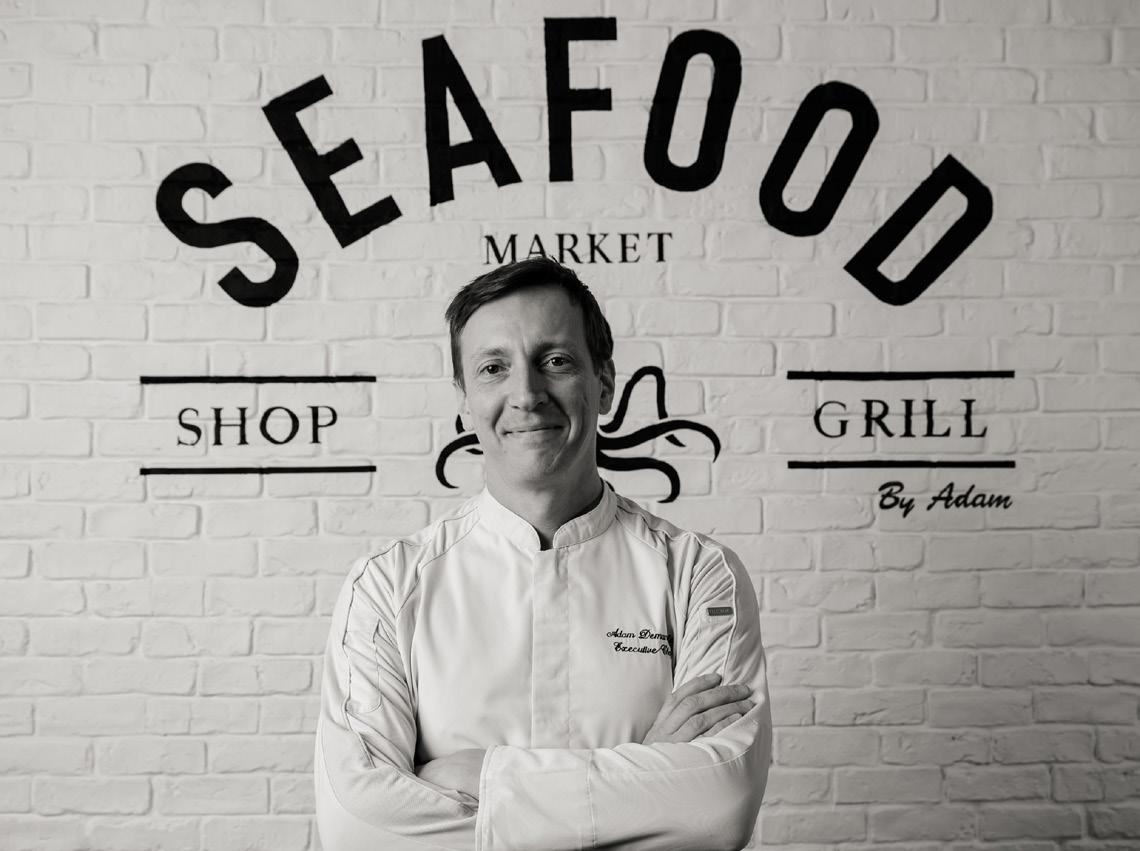





Merchants Street, Valletta
If you're looking for an extraordinary dining experience in the capital city, book a table at MUŻA Restaurant. Situated in the picturesque courtyard of an old auberge, MUŻA provides a cosy, laidback ambiance, perfect for a romantic dinner, or a night out with friends. The menu is bursting with fresh, local ingredients, and the knowledgeable staff can help you select the perfect wine to complement your meal.
(+356) 7979 0900
MUZARestaurantValletta muzarestaurant
66, Church Street, St Paul’s Bay
Ostrica Restaurant, located on the picturesque coast of St Paul’s Bay, is renowned to be one of the best restaurants in the area for fresh fish and local flavours. Housed within the historic Gillieru Harbour Hotel, a beloved establishment since the 1960s, it offers stunning views of the bay and nearby islands. Otrica delivers an unforgettable culinary journey, blending tradition and innovation in a cosy, seaside atmosphere perfect for a memorable meal.
(+356) 7902 2371
ostrica ostrica


St George’s Bay, St Julian’s Andrew's Bar is a freshly re-opened venue where fun is not optional, good food is compulsory, and building great memories is essential. Steeped in legacy, this is, in fact, Malta's oldest bar! The place is a go-to, and you're simply going to love indulging in the extensive menu, with a great local cuisine focus, serving traditional Maltese and modern dishes, such as pizza or pasta. Ideal for breakfast, lunch and dinner, it is also perfect for a quiet drink or two.
(+356) 2138 8031 info@andrewsbar.com

TA' KOLINA
151, Tower Road, Sliema
Ta’ Kolina is a quaint, family-run restaurant on Tower Road (one of Sliema’s most popular spots). Open since 1974, it is a typical Maltese restaurant with a traditional Maltese interior and décor. A set menu comprising of traditional Maltese food offers a choice of starter, main dish, dessert and coffee for €24 per person. There is also a vibrant à la carte menu and daily display of fresh local fish. Dining here is a true Maltese experience for a reasonable price. Ta' Kolina is open for both lunch and dinner from 12 to 10.30pm.
(+356) 2133 5106 www.takolina.mt

Words by Adriana Bishop
These sweet almond biscuits are the OG Halloween treat on the Maltese Islands, where culinary traditions are often dictated by religious feasts.
First things first: we’re talking about biscuits. Just in case you may be wondering if you’ve stumbled across a ghoulish article about anatomy or some unsavoury Maltese fetish for human bones, rest assured, Dead Men’s Bones are just sweet treats. Albeit in the shape of bones. And they do represent dead people. But the morbid references end there.
Malta has a long-standing tradition linking religion and food. The religious calendar, reflecting seasonal produce, would dictate the type of food that could be eaten on certain days, especially the days of fasting in the lead up to an important feast such as Easter, followed by gluttonous celebrations, with dining tables groaning under the weight of delicious abundance. For example, dinner on Wednesdays, Fridays, Saturdays and the eve of feasts would always consist of fish.
Long before the Americanised version of Halloween swept over the Maltese shores, sparking a colourful festival of friendly ghosts and tacky trinkets, the last day of October was just another day in the calendar, while the first and second days of November were, and are still, commemorated as the feasts of All Saints and All Souls. Or, if you are of school age, mid-term holidays.
In fact, the whole month of November is dedicated to the memory of our dead loved ones, when we make it a point to visit the cemetery to clean their tombs. There was a time when priests would display empty coffins outside the churches to remind their parishioners of the afterlife. Perhaps in a fitting lead up to the jollity of Christmas a month away, November is a sombre time of reflection on life and death.
The month of the dead has its own culinary traditions, mostly related to sharing food with your less fortunate neighbours. Dead Men’s Bones (in Maltese, Għadam tal-Mejtin) are the sweetest of such a tradition, in all senses, and are still as popular today as ever. On November 2, the feast of All Souls, Mass would be celebrated in remembrance of the departed who have not yet reached paradise and are still in purgatory. Children would give up sweets on that day and leave a piece of cloth under their pillow when they go to sleep. In the morning, they would find some sweets wrapped in that cloth napkin in another tradition known as is-Sarvetta ta’ l-Erwieħ (the napkin of All Souls).
Villagers or a religious community would get together to prepare a large pot of “All Souls Soup” full of cheap but nutritious vegetables and pasta to be distributed among the village poor. Up till the brink of World War II, some villages would prepare the ħanżira ta’ l-erwieħ, when a pig, often donated by a generous family, would be allowed to roam freely through the streets, fed with scraps until fattened enough to be slaughtered and cooked for an All Souls roast pork feast for the poor.
Food writer Matty Cremona recounts how in the years before World War II, there used to be a procession on All Saints' Day, when beggars and other hungry people would knock on doors calling for karità (charity) while holding out bowls for bread or flour. “This may have its roots in the old practice of vowing to give some wheat to the poor in honour of the dead or in thanksgiving for a prayer answered,” writes Cremona in her book The Way We Ate - Memories of Maltese Meals.
While there is no clear historical reference to the origins of Dead Men’s Bones biscuits, their similarity to the more cheerful Easter figolli, with their sweet pastry encasing an almond filling, hints at the possibility that they might date back to the 17th century, with the first mention of figolli registered in 1660.
At an average of 14cm in length, the biscuits are roughly half the size of an adult humerus bone (that’s your

upper arm) and are not only shaped like bones but are also covered in white icing to complete the anatomical picture. The thick sweet pastry wraps around an inner marrow of ground almonds, a staple of Maltese celebratory desserts, mixed with a generous amount of sugar, egg whites and grated lemon rind.
The bone shape is intentional as it is meant to serve as a memento mori, a reminder of people’s “devotion towards the dead”, and sometimes, the bakers went as far as creating biscuits in the shape of skulls and crossbones.
Today, Dead Men’s Bones can be easily found in all bakeries and supermarkets, and some producers are even experimenting with pistachio filling as an alternative to the traditional almonds, although I’m not sure what the dead would make of this unorthodox novelty.
Now, considering that the human adult skeleton is made up of 206 bones, how long would it take to consume a full skeleton’s worth of Dead Men’s Bones biscuits? Asking for a friend.
DID YOU KNOW?
When a person died, a newwieħa (professional mourner) would be hired. She would come and turn all the pots and pans in the victim’s house upside down as the family would not be allowed to cook anything for three days. Food would be provided by relatives and meals would be eaten off the floor not at table.
SERVES 10 – 12
INGREDIENTS
FOR THE PASTRY
400g flour
100g caster sugar
200g butter
2 egg yolks
FOR THE FILLING
300g finely ground almonds
300g caster sugar
Grated rind of a large lemon
2 egg whites
METHOD
Rub the butter into the flour and sugar. Add the yolks. Stir to form a dough. If the mixture is too dry add a drop of water. Set aside.
Stir together the dry ingredients for the filling. Add the egg whites. Stir to make a fairly dry paste. Break off pieces and mould into classic bone shapes. Roll out the pastry and cut it into square pieces large enough to roll around the boneshaped bits of almond filling. Wrap the filling up in the pastry, tucking it around to make a neat bone shape.
Bake at gas mark 5/190°C for about 30 minutes or until they are golden brown. Cool the biscuits on a rack before coating them with thick white glacé icing or royal icing.
Recipe adapted from The Way We Ate – Memories of Maltese Meals by Matty Cremona.

DO NOT MISS
Learn how to make Għadam tal-Mejtin with Heritage Malta on 4th and 5th November at the Inquisitor’s Palace, Birgu, at 3pm.
For further information, visit heritagemalta.mt



Escape to the quaint island of Gozo!
Malta’s historic and charming sister isle - just a short 25-minute ferry away. .







Words by Daniel Cilia
There’s much to see and do in Gozo too. But if you have a penchant for history and archaeology and want to wander off the beaten track, visit the Ras il-Wardija sanctuary. It may be little known, but it forms a key part of the islands’ rich heritage, linking them to the ancient Mediterranean world.
The arrival of the Phoenicians around 700 BC was a turning point for the Maltese Islands, bringing them into a vast Mediterranean trading network. The Phoenicians, famed for their maritime skills, established trade routes that positioned Malta as a key stop for merchants and sailors.
By 550 BC, power had shifted from Phoenicia (modern Lebanon) to Carthage (modern Tunisia), signalling the start of the Punic era, and Gozo fell under Carthaginian influence, further embedding it within the Punic sphere of power.
One of the most intriguing remnants of this period is the Punic sanctuary at Ras il-Wardija, Kerċem, a site of profound historical and archaeological significance. This sanctuary, carved into the rock, features a man-made cave with five square-headed niches, each of which originally contained rock-hewn symbols.
By the 1960s, these symbols were still intact, though over time, they have largely disappeared due to wind erosion. The last surviving symbol, removed by unknown individuals in the 1990s, was eventually recovered and now resides in the national collection, where it is displayed at the Gozo Museum of Archaeology. Though often identified as a symbol of the deity Tanit, it resembles a figure with outstretched arms, like a crucifixion.
Perched on a promontory, the sanctuary overlooks the dramatic landscape of Dwejra and Xlendi Bay, 120 metres above sea level. This striking location, combining rockhewn and built elements, likely served as a navigational beacon for sailors approaching the nearby port of Xlendi. Bonfires lit at night or smoke signals by day would have been visible for miles, guiding mariners to the island.
The site was excavated in the 1960s by the Missione Archeologica Italiana a Malta, but time and the elements had already taken their toll.
The sanctuary, situated on a narrow strip of land atop rugged cliffs, has suffered from the relentless winds of the sea, which have eroded much of its structure. Many of the stones that once formed part of it were repurposed into field walls nearby, leaving archaeologists struggling to reconstruct a plan of the original temple.
Higher up the slope from the sanctuary lies the manmade cave, featuring several niches, a rock-cut cistern, and a three-metre-deep water basin, which fills with rainwater during the winter months.
Visitors to the site must tread carefully, as the sheer cliffs drop precipitously into the sea below. The land on which the sanctuary stands remains privately owned, adding further layers of complexity to its preservation.
But Ras il-Wardija is also linked to another discovery – this time lying 110 metres beneath the sea. In 2007, during an offshore remote sensing survey aimed at mapping Malta’s underwater cultural heritage, a small anomaly was detected in the sonar data, leading to one of the most exciting underwater archaeological finds in recent history: a Phoenician shipwreck between Xlendi Bay and Ras il-Wardija.
This shipwreck, remarkably well-preserved, dates back to the 7th century BC and contains a mixed cargo of stone and ceramic objects. The artefacts recovered from the site are offering invaluable insights into the economic and trade networks of the central Mediterranean during the Archaic Period (700 – 500 BC).
Since 2014, a team from the University of Malta, alongside international experts, has conducted detailed studies of the wreck, employing advanced techniques such as 3D photogrammetry and artefact recovery.
The first underwater excavation at this depth occurred in 2018, revealing previously unknown ceramic typologies and offering new opportunities for scientific research. The layers of sediment preserving the wreck continue to yield discoveries, enriching our understanding of the Phoenicians’ maritime empire.
Both this shipwreck and the Ras il-Wardija sanctuary form a key part of Malta’s rich archaeological heritage, linking the islands to the ancient Mediterranean world. These treasures, above and below the water, offer a tangible connection to the Phoenician and Punic past, which continues to shape the Maltese Islands today.
The first recorded mention of Gozo’s name occurs not long after the Phoenicians, who introduced the alphabet, settled on the island. Preserved in a contemporary navigational chart and recorded in Greek rather than Phoenician, the name ‘Gaulos’ appears for the first time in the writings of Hecataeus of Miletus, a historian who flourished around 500 BC. He refers to the island as Γαυλος (Gaulos), and its inhabitants as Γαυλιτες (Gaulites). The only surviving symbol from the niches of the man-made cave.

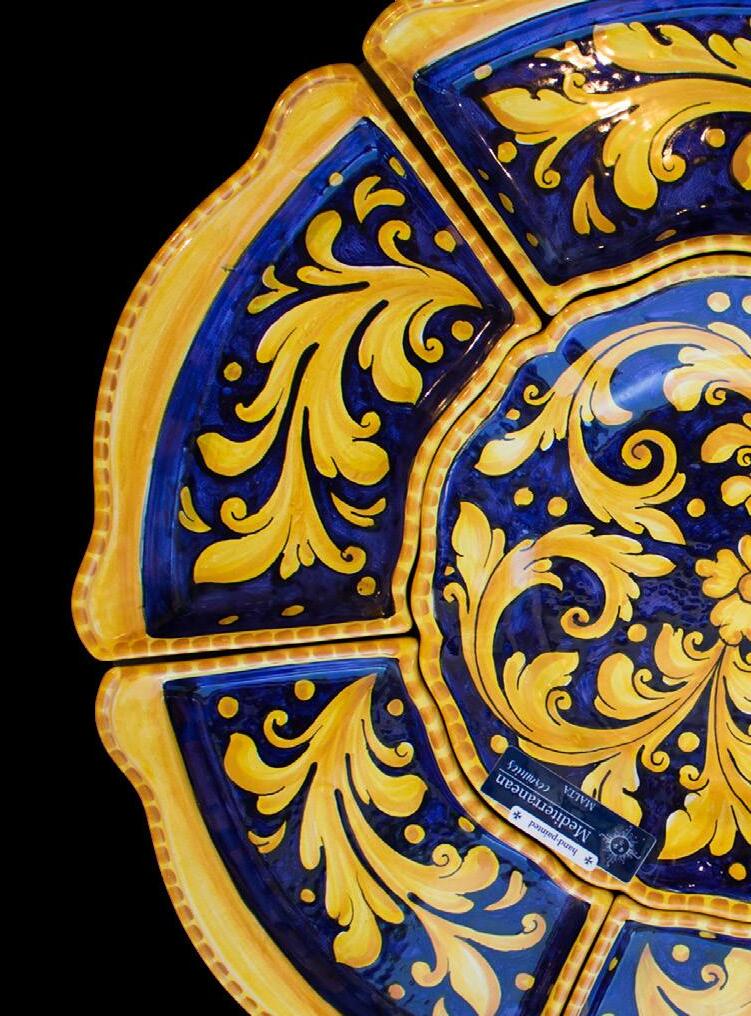
This month’s ‘Made in Malta’ series explores the mission of Mediterranean Ceramics to revive ceramic-making on the islands. From hand-crafted and decorative creations to customised dinner sets, hand-painted lava stone tabletops and vibrant outdoor pots, the focus is always on that Mediterranean feel.

their offering fresh and relevant.
“Totally new and totally Maltese,” she tells me as we sit at a painted lava stone table, one of their most popular products.
In fact, the importance of ensuring that they manufacture as much of what they sell as possible was so great that they established their own steel workshop. Here, most of what they create are the bases that carry these weighty tabletops, though gates and gazebos are often produced too. The only product that isn’t fully Maltese is the lava stone itself, though you’d be hard-pressed to find it anywhere without a volcano!
With decades of experience in the earthenware industry, her father David and uncle Brian wanted to move away from the British influences that had shaped their beginnings and more towards a local style. This eventually led to them founding Mediterranean Ceramics in 2008. Although popular with the growing middle-class and increasing tourist numbers, it was always the founders’
desire to move away from imports and focus fully on celebrating the beauty of locally- and hand-made ceramics.
Although present in St Julian’s and the Valletta Waterfront, Ta’ Qali is where the magic happens. After walking past the shop space and café, you enter the cavernous workshop, with artists busy painting away at whatever set has just
Beyond this area are the two enormous kilns, large enough to take several lava stone tabletops stacked four abreast and four high. Cross the road at the back of this building and you’ll enter the steelworks. It’s a big space, but it’s nothing without the large team of skilled artists and craftspeople who make it all happen.
With Jessica and Bettina slowly taking over the helm, part of their invigorating approach to the company’s leadership has been to build bridges overseas. While there has historically been a strong UK link, this was scuppered by the bureaucratic nightmare that is Brexit. Strangely enough, it’s easier to deal with the US nowadays and they’ve already built a strong connection stateside.
“Follow the flower shows,” Jessica exclaims as I ask how she started making inroads with the States. Hugely popular, these travelling shows set up for weeks on end in various states and provide fertile networking space for all things botanical. With their lava stone tables often depicting a variety of floral motifs and the American love of all things made in the Mediterranean, they were a sure-fire hit.

Jessica and Bettina haven’t only looked west though, having also ventured east, both near and far. One of their most fascinating and challenging projects to date came from Dubai. After discovering a call for interest for a construction project in the Middle Eastern metropolis, they took a deep breath and dived in. Competitors? Many. Experience? None. What was there to lose?!
Although Mediterranean Ceramics had been around for decades, this was the first time they were exploring the creation of huge, painted, ceramic panels to decorate the entire façade of a construction project. So complex was it that their architect told them to forget it: “It’s not worth the trouble,” he said.
“Dad’s always been the stubborn one,” Jessica relates with a cheeky grin. “We don’t know something? We’ll figure it out!” It was this can-do attitude that won them the tender and helped them execute the job perfectly. Every panel had to be created based on measurements sent from Dubai and then shipped over for the contractors to install. Not one panel arrived broken and every single one fit perfectly.

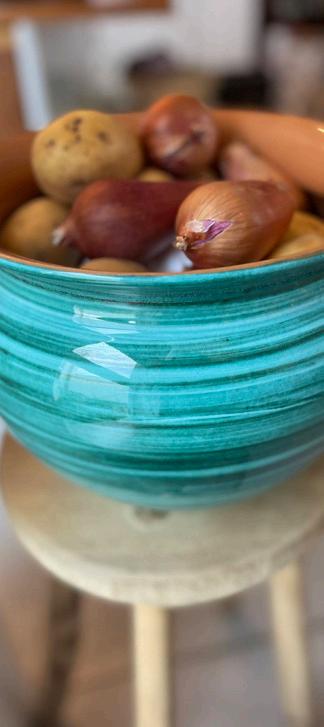

This wasn’t down to luck. Endless hours of preparation and measuring and re-measuring and careful packing went into the project, and it all paid off beautifully.
As for the inevitable ‘what’s next’, Jessica isn’t fazed. “The Maltese have really grown to love local. We’re no longer looking to import art and objects, but we’re appreciating homegrown talent more each day.”
It is this shift that has them attempting to crack the corporate world here.
“We’re so grateful that visitors love what we do, but it makes us so proud to see that the Maltese are becoming just as interested.”
At the end of our chat, manning the workshop solo today, she’s whisked off by a long list of orders and clients to deal with, so I slowly wander out, taking it all in. Today’s all about this interview of course, but I’m certainly planning my next visit – this time as a customer.

“We’re so grateful that visitors love what we do, but it makes us so proud to see that the Maltese are becoming just as interested.”










Get ready to immerse yourself in a stunning array of events, festivals, and activities that will make your stay truly unforgettable!





UNVEILING THE BEAUTY OF THE
The Maltese Islands boast over 7,000 years of history and a number of spectacular bucketlist sites. Here’s our top five…
1. Valletta
Valletta’s beautiful baroque architecture and rich heritage earned Malta’s capital city the accolade of being a UNESCO World Heritage Site. Make sure to visit the recently renovated Grand Master’s Palace and discover the legacy of Malta’s illustrious past creating, an unforgettable journey for every visitor.
2. Ġgantija Temples, Gozo
The Ġgantija Temples are among the oldest, free-standing structures in the world, created 1,000 years before the famous Egyptian pyramids of Giza and Stonehenge.
3. The Three Cities
The Three Cities is the collective name of the three fortified cities of Vittoriosa, Senglea and Cospicua, which are right opposite Valletta.


4. Mdina
The origins of Mdina, Malta’s former medieval capital, can be traced back more than 4,000 years. Mdina is still home to Malta’s noble families and impressive palaces line its narrow, honey-coloured streets. It is often referred to as the ‘Silent City’ as no cars are allowed to pass through its gates.
5. Ramla Bay, Gozo
Ramla Bay is the biggest sandy beach on Malta’s sister island of Gozo. Often ranked as one of the most beautiful beaches in the world and it boasts rich-coloured sand surrounded by crystal-clear azure blue waters.

Words by Adriana Bishop
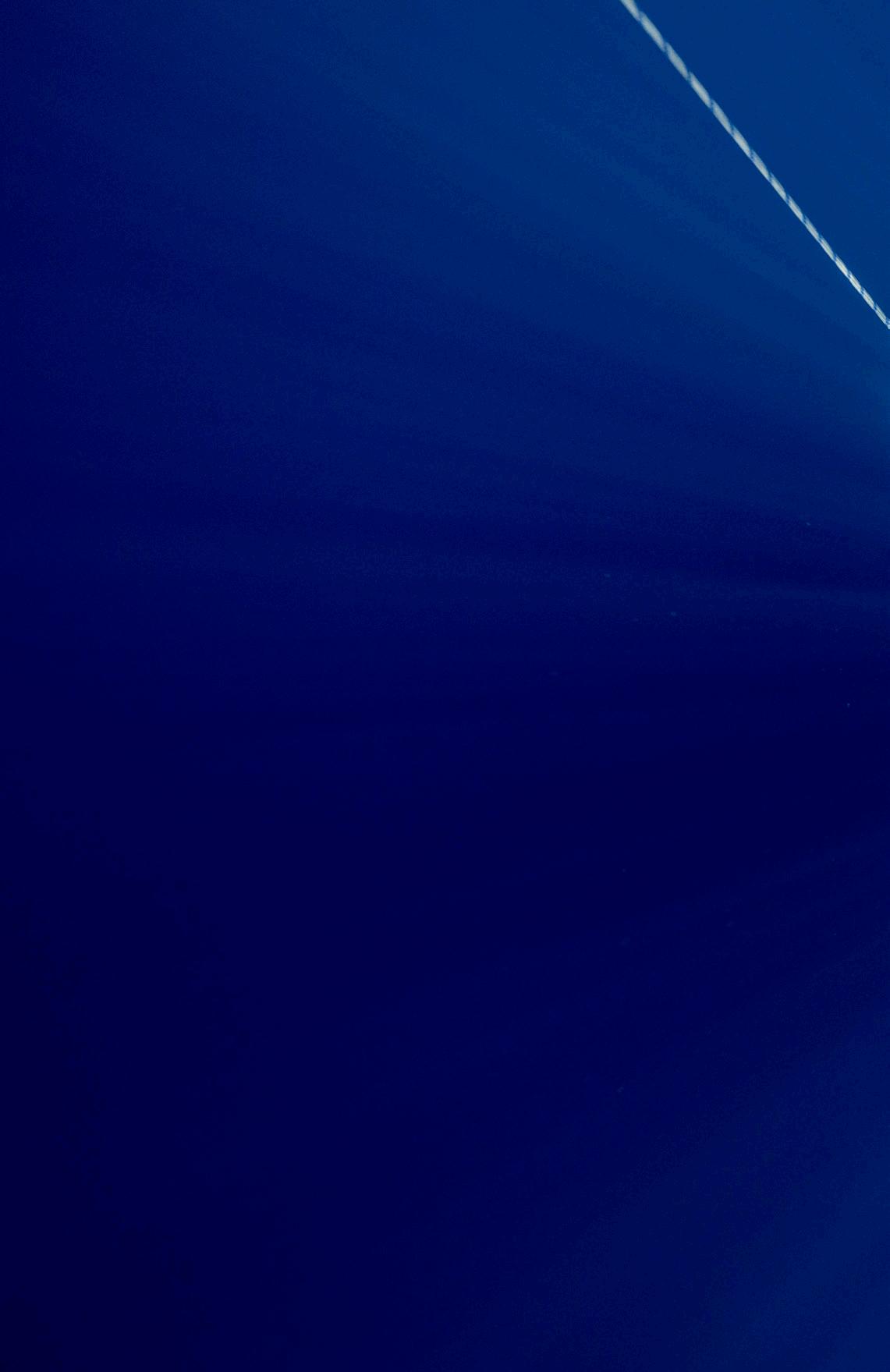
Professional freediver Fabrice Bonello DuPuis reveals that the secret to the perfect freediving experience is complete relaxation so you can “melt away” underwater.
It’s not easy getting hold of Fabrice Bonello DuPuis as the diving season on the Maltese Islands extends way beyond the summer months, keeping him busy underwater, or on a boat, well into November and December.
Even on a 'dry day', the 34-year-old professional freediver and owner of Deep Med freediving school still looks like he’s ready to jump into the water at any moment.
Appearing shirtless on my Zoom screen on his day off from his home in Xagħra, Gozo, he’s hopping like a pinball around his kitchen eating breakfast, occasionally stopping to look straight down the camera to explain how freediving has changed his life.
Freediving may be a relatively recent addition to the local diving scene, but it is by no means a new sport. People have been freediving for food since 6000 BC
and some consider it the most natural and serene way to explore the sea.
For Fabrice, freediving is something he “connected with”. He took up the sport in his late 20s when he found himself at a crossroads in his career. Originally a professional navigational officer, he grew up in the sea and found sports was the only subject he excelled in at school.
Fabrice uses the principles of Yoga Nidra, the ultimate relaxation technique for releasing stress and tension held in the body, to teach his students how to prepare for the final breath hold:
“You have to go down in complete relaxation. The general preparation for the breath hold is quite simple.
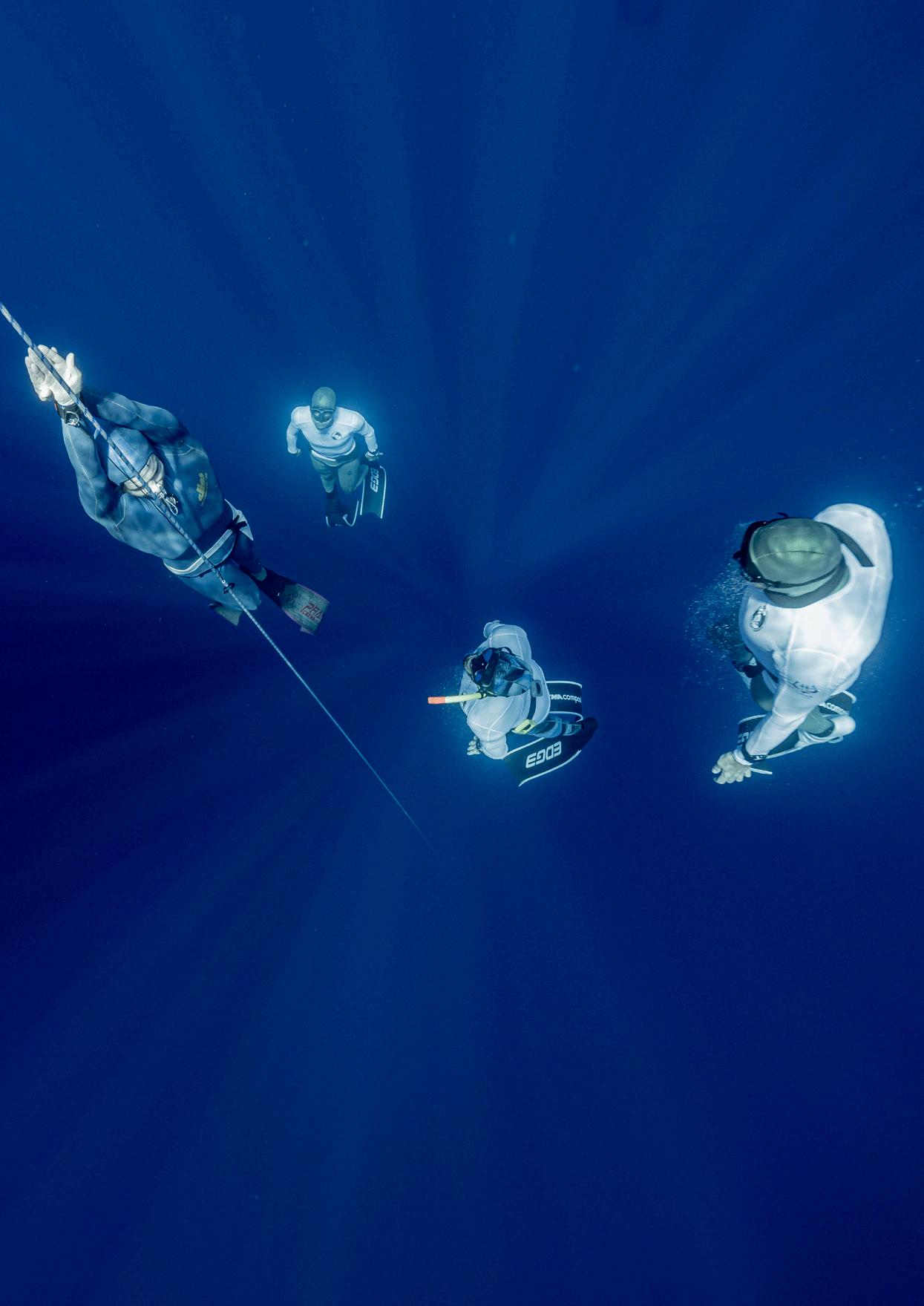
You just need to have focus, relaxation and sensitivity.”
In Yoga Nidra, you lie down flat on your back with the palms of your hands facing up and aim to move into a deep state of conscious awareness ‘sleep’.
“As we prepare to take our final breath, we have to stay very still in the water. We need to have complete stillness and focus on finding the tension in our body. We scan areas of the body where there is tension and relax all that stress.
“A still body, a body with no tension, means that physically you are calm and mentally you are focusing in the present moment. The heart rate calms down, and we go into a mammalian diving reflex,” Fabrice explains.
“The more you get into freediving, the more you start becoming extremely aware of your stress levels,” he continues, adding that this whole process leads to a heightened awareness of how to calm yourself down.
“People perceive a freedive as holding their breath, but the feelings are of complete ease and pleasure. You have to come up from a dive feeling like it was nothing. You are not gasping for air; there is no room for that.”
And once underwater, you abandon yourself to a feeling of “internal peace”. For Fabrice, the best part is the free fall around a metre per second.
“Once you accomplish all the skills, it is like flying underwater.
Malaysia’s ‘sea gypsies’ can freedive for up to five minutes at a time.
Korea’s Haenyeo women divers start training at age 11.
Japan’s Ama pearl diving ‘mermaids’ believe men can’t do their job.
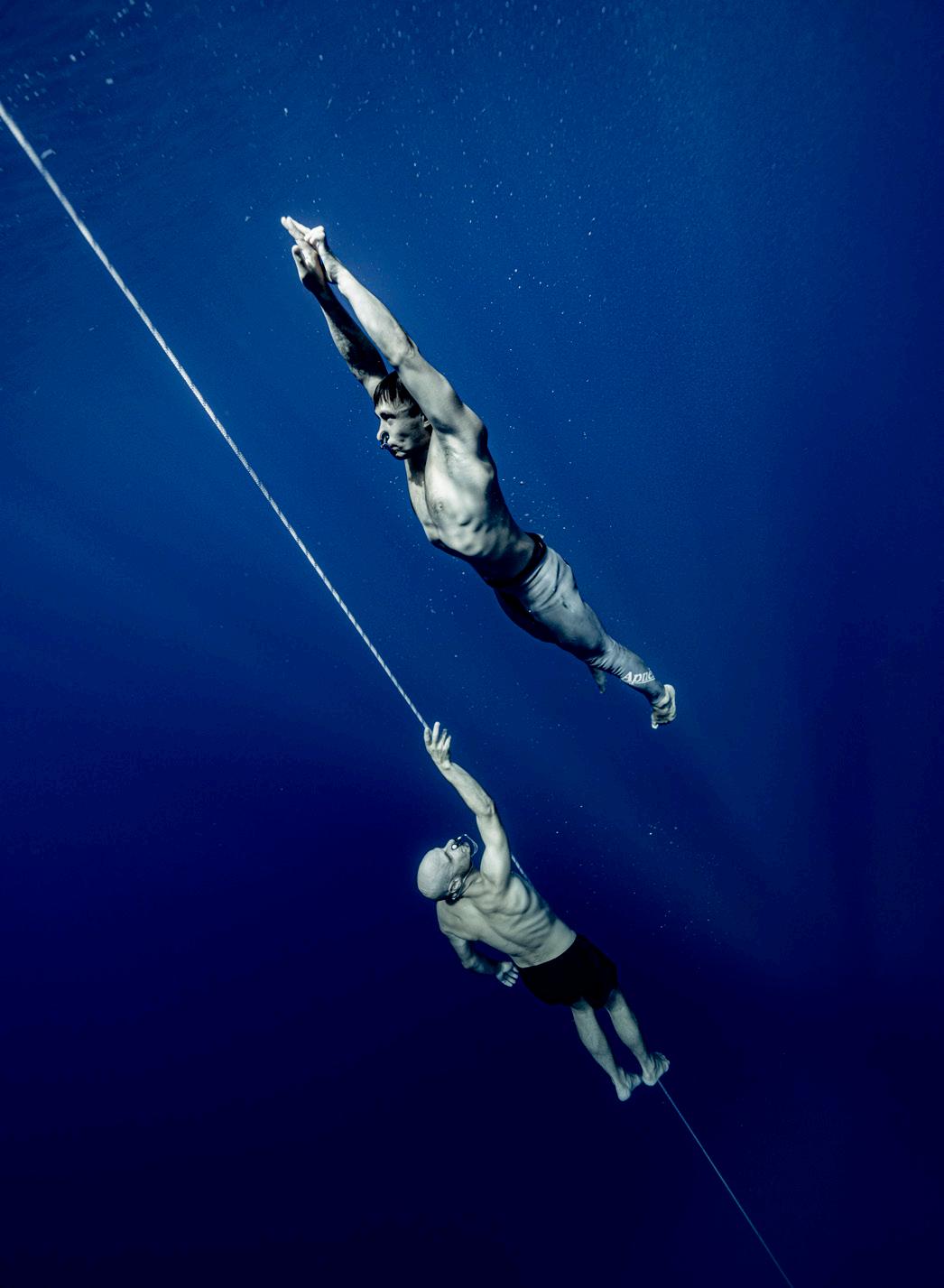

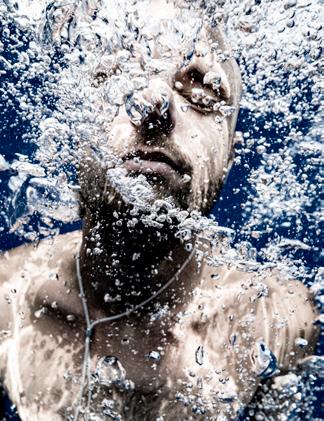
"You melt away; you have to let go and you become a part of it. I close my eyes so I can focus internally a lot more for pleasure and for peace.
“The feeling is like going on a bit of a trip. Some people remember it and others don’t. You are in a complete state of flow. I come up from my dive and I find I have to write about it, otherwise I forget what it was like.”
Earlier this year, Fabrice and fellow freediver Nikki Muscat set the first CMAS national records in freediving. Fabrice achieved 52m constant weight (CWT), 52m free immersion (FIM), 40m no fins (CNF) and 56m bi-fins (CWTB).
Even with his years of training, competition nerves got the better of him and he found it difficult to calm his heart rate down. On the first of four competition days, Fabrice said he was “so nervous, it was crazy. I couldn’t calm myself down on the line. My heart rate was erratic. In hindsight, maybe I should have aborted the dive, but my ego told me otherwise. Maybe that is something I should work on”.
Fabrice got in touch with his coach, who advised him how to approach the rest of his competition dives; how to control his inner dialogue; and to write down on his wrist the step-by-step schedule leading up to the dive.
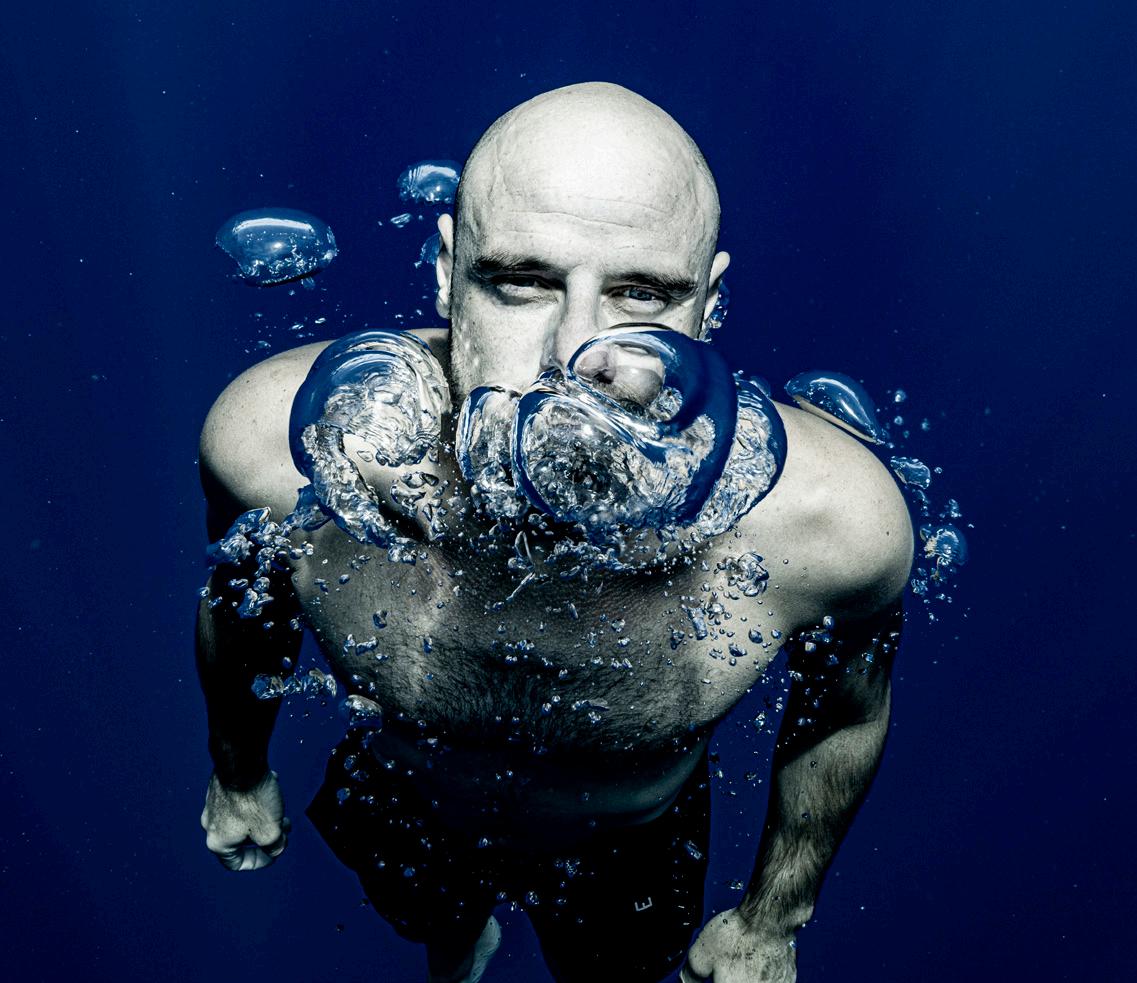
FAVOURITE DIVE SITE?
The electric blue sea under Sanap Cliffs in Gozo is difficult to find anywhere else in the world. Those cliffs have the wow factor every single time.
LIFE ON LAND OR IN THE SEA?
I like the sea but I like the feeling of land as well. If I had gills, it would be pretty cool.
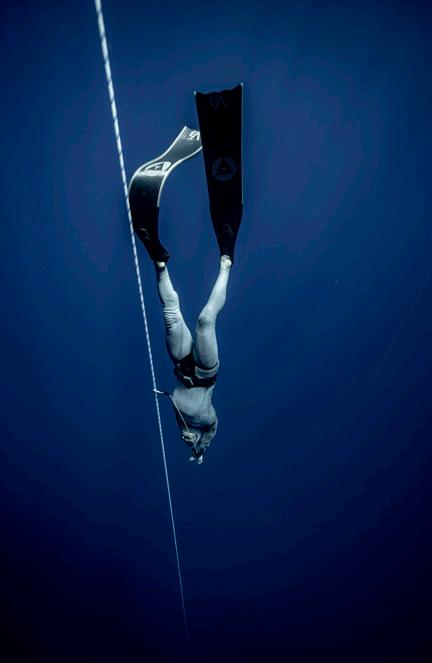





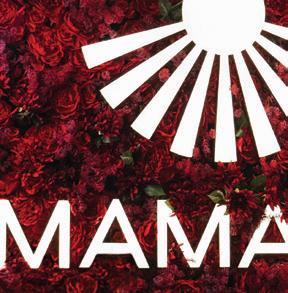

“People perceive a freedive as holding their breath, but the feelings are of complete ease and pleasure. ”



“The change was massive. My heart rate was still different from a normal dive, but everything was more in control,” he said.
While Fabrice may be a national record holder, he is not sure he’d be up for competing again. He would like to dive deeper, but there is no ultimate depth goal. “The goal is to continue the journey and continue improving both in and out of the water.”
Freediving has taught Fabrice to change his life habits, get fitter and eat better, leading a more holistic life. This, in turn, has changed the way he dives.
“Diving teaches you about yourself. I started to realise certain things while diving, such as when I feel a particular sensation and keep on going, but I should have hit the brakes. This is the same thing in life. You start to feel more… more sensitivity through more focus and relaxation.”





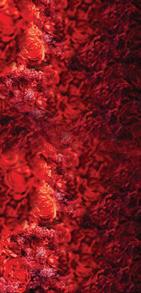




Words by Vanessa Macdonald
SiGMA’s first edition hosted just 1,500 visitors, but its 10th, gaming expo this month gathers an estimated record-breaking 27,000 delegates. Its founder Eman Pulis talks about the extraordinary journey of this now global powerhouse in the iGaming and emerging tech industries.
THIS YEAR’S SiGMA EVENT IS ONCE AGAIN BEING HOSTED AT THE MEDITERRANEAN MARITIME HUB. WHAT WAS THE FEEDBACK FROM LAST YEAR’S PARTICIPANTS?
It was overwhelmingly positive. From the very first expo at the Bay Arena in St Julian’s to the MFCC in Ta´Qali, SiGMA has continued an upwards trajectory of growth that has outpaced Malta’s infrastructure. We are now looking to our second year in a new space at the Mediterranean Maritime Hub (MMH), a shipbuilding yard, which, with a little bit of vision and a lot of work, has offered SiGMA more opportunities to accommodate the growing needs of the gaming community.
The improvements planned for the 2024 event are designed to significantly enhance the attendee experience. Based on feedback from last year, we’re introducing several upgrades, including additional networking lounges and a double-decker space above the registration area, featuring a lounge and balcony to foster better connections.
Attendees can also expect a new floor installation, expanded parking zones, brand-new entrance doors for a more welcoming atmosphere, and streamlined routes to and from the venue.
AN IMPORTANT PART OF THE EVENT IS THE STARTUP PITCH. CAN YOU TELL US MORE?
A little-known industry secret is that the best return profile in venture capital has historically been produced
by newcomers at the early stages of investing. The Startup Pitch is a standout feature of SiGMA Europe, offering some of the most promising new businesses a chance to showcase their potential in front of leading investors, venture capitalists and accelerators. It has become a staple of our global conferences, providing startups with valuable exposure and the opportunity to secure equity investment, mentorship, consultancy, digital marketing and top-tier networking opportunities.
This year, SiGMA is going all out to support startups through its Startup Village. This exclusive space on the expo floor gives companies high visibility, personalised introductions and worldwide exposure.
THE REGISTRATION POINTS OUT THAT “SOME OF THE BEST BUSINESS DEALS TAKE PLACE DURING OUR NETWORKING EVENTS: DINNERS, DRINKS, PARTIES AND EXTRA CULTURAL TOURS”. IS THIS FORMULA WHY THE EVENTS HAVE GROWN SO SUCCESSFUL?
Absolutely! There’s a unique ‘friends before business’ approach embedded in the way we facilitate connections, which fosters genuine relationships before deals are made. Exhibitors consistently rate SiGMA as the event generating the most business, largely due to the emphasis on informal networking opportunities like dinners, parties and cultural tours. These events create a relaxed environment, where industry stakeholders can bond, build trust and, ultimately, solidify strong partnerships.
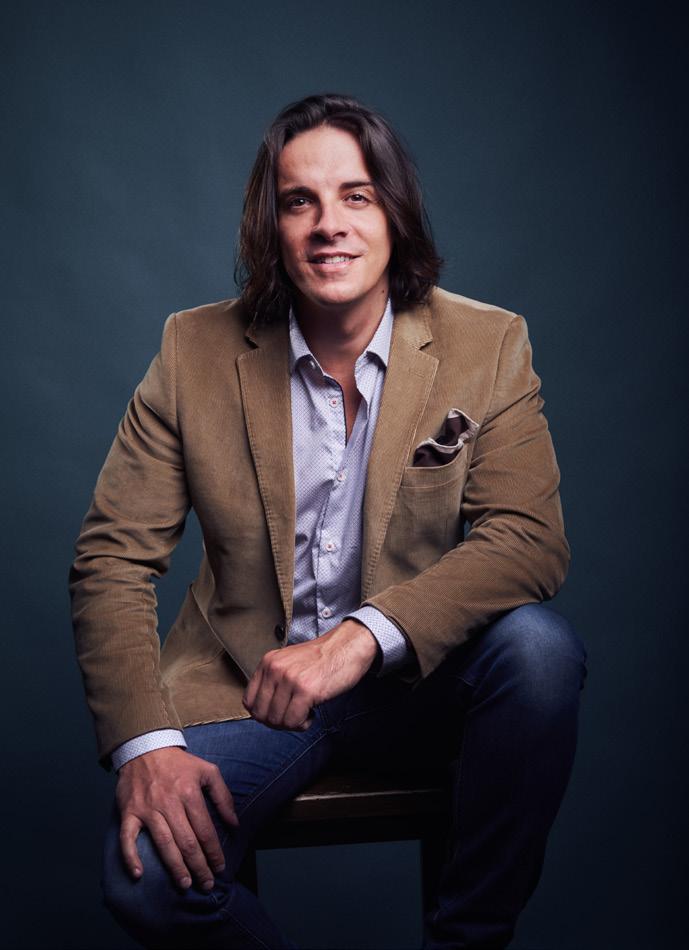
THIS IS THE 10TH EDITION. HOW HAS THE EVENT CHANGED OVER THE DECADE AND WHERE DO YOU SEE IT IN 10 YEARS’ TIME?
Since its inception, SiGMA has grown from a local event with just 1,500 delegates into a global powerhouse in the iGaming and emerging tech industries. The 2024 edition of SiGMA Europe is expected to host a record-breaking 27,000 delegates, supported by a network of 1,000 premium exhibitors and sponsors. While we started with just one conference in Malta, we now host seven around the world, including our newly launched SiGMA South Asia event in Sri Lanka.
Our company mantra – “go global but act local” – has helped us expand internationally, while still catering to local needs. With over 200 skilled employees across six global offices, we are equipped to deliver excellence at every event.
Looking ahead, we see SiGMA continuing its rapid expansion, further strengthening its position as a global authority in iGaming, tech and investment. In the next 10 years, we envision even greater growth in emerging markets, more innovative conferences and a continued focus on fostering meaningful connections across the globe.
S i GMA HAS BECOME MUCH MORE THAN THE EVENTS IT ORGANISES AROUND THE WORLD. HOW DO YOU DEFINE ITS CURRENT PLACE IN THE GAMING SCENE?
“Balancing innovation with responsible gaming practices and regulatory compliance will be key to the industry’s continued success.”
Over the past decade, SiGMA has evolved into a multifaceted organisation supported by eight pillars. In addition to a global portfolio of events, it is active in affiliation through SiGMA Play; VC Ikigai Ventures, which helps support startups; a news site supported by an international team of journalists and reporters, state-ofthe-art studio productions, including podcasts and video, and SiGMA magazine; ADR – a conflict resolution service for players and operators; Brokerage, a service that leverages our deep pool of connections and experience; and Poker Tour, an expertly crafted series of live poker events, offering a blend of top-tier poker action and premium networking opportunities, designed to connect poker professionals from around the globe and bring the poker community closer to the iGaming industry.
The poker tour is also part of a larger effort by SiGMA Group to make the SiGMA Summits umbrella events that bring all gaming stakeholders together. In 2025, the SiGMA Poker Tour will strategically coincide with SiGMA’s landmark summits in Asia and Europe, and our charitable arm, the SiGMA Foundation.
WHAT ARE THE THREATS AND OPPORTUNITIES FACING THE GAMING INDUSTRY NOW – NOT ONLY FROM A COMMERCIAL POINT OF VIEW, BUT ALSO FROM A REGULATORY ONE?
The gaming industry faces both significant opportunities and threats in today’s rapidly evolving landscape. On the opportunity side, advancements in technology are

transforming the industry, offering new ways to enhance security, personalisation and user experience.
Emerging markets in Africa, Asia and Latin America also provide huge growth potential, fuelled by increased internet access and favourable regulatory changes. The rise of mobile gaming and e-sports is another major opportunity, drawing younger audiences and opening up new revenue streams. Additionally, increased investment from venture capital and private equity is driving innovation and expansion.
However, the industry also faces threats, particularly from regulatory pressures. Governments are increasingly scrutinising online gambling to address issues such as problem gambling, fraud and money laundering. Stricter regulations could limit market access, reduce profitability and impose heavier compliance burdens on operators. Balancing innovation with responsible gaming
practices and regulatory compliance will be key to the industry’s continued success.
THERE IS AN EFFORT IN THE LOCAL FINANCIAL SERVICES SECTOR TO ATTRACT MORE VENTURE CAPITAL AND PRIVATE EQUITY. WOULD THE GAMING WORLD BE ABLE TO SPREAD THESE CONCEPTS INTO MALTA?
The gaming world has the potential to significantly contribute to Malta’s efforts to attract more venture capital and private equity. As a global hub for iGaming, Malta already boasts a dynamic ecosystem of tech innovation and entrepreneurship, which aligns well with the interests of venture capital and private equity investors seeking high-growth opportunities.
The gaming industry is known for fostering cutting-edge technologies, such as blockchain, AI and fintech, all of which have strong synergies with the financial services sector.

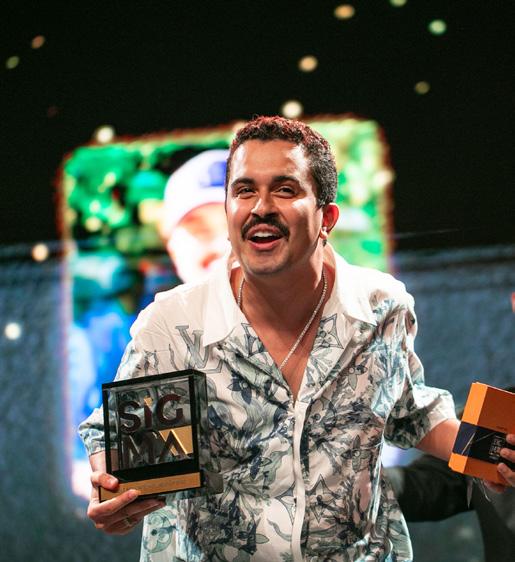
SiGMA’s own initiatives, such as Ikigai Ventures, have already demonstrated a commitment to supporting startups and innovative projects through funding and mentorship. This focus on entrepreneurship can help attract more investors to Malta, as the island continues to position itself as a leader in both gaming and finance. By blending the growth potential of the gaming industry with the investment appetite of venture capital and private equity, Malta could become a powerhouse for funding and innovation across multiple sectors.
LAST YEAR WE TALKED ABOUT IKIGAI VENTURES, PART OF YOUR DRIVE TO PUSH INNOVATION THROUGH A SEED FUND. HOW HAS THIS EVOLVED OVER THE PAST TWO YEARS SINCE INCEPTION?
Ikigai is going very well. Its synergies with SiGMA are deep and visible. Both ventures are benefiting from each other tremendously. While, for confidentiality reasons, I can’t disclose the actual figures, Ikigai’s returns and name within the industry have far outperformed our initial expectations. As the projects mature, we expect these returns to solidify our initial goal of having Ikigai serve as an essential actor in iGaming innovation.

YOUR PHILOSOPHY WITH REGARD TO OTHERS IS SUMMARISED IN THE SOUTH AFRICAN WORD UBUNTU. WHAT DOES IT MEAN?
Ubuntu is a South African philosophy that encapsulates the idea of shared humanity and interconnectedness. It is often summarised by the phrase, “I am because we are,” emphasising the belief that an individual’s well-being and success are deeply tied to the wellbeing and success of others. ww reflects values of compassion, community and mutual respect, encouraging us to treat others with kindness and recognise our collective responsibility to support and uplift one another.
From building schools in Ethiopia to supporting cleft palate surgeries for underprivileged children in Colombia and housing projects in the Philippines, SiGMA is leveraging its influence to create positive change beyond the gaming industry. In 2025, the foundation will support the extension of a new hospital in Peru, an MMA sports centre in Brazil in collaboration with Centurion FC, and a community centre for the Batiawan community in Zambales, Philippines.
BetConstruct is a global leader in online gaming and sports betting solutions, renowned for its excellence and innovative approach. With a robust portfolio of award-winning products, BetConstruct caters to diverse partner needs and provides the groundwork for success in the competitive iGaming industry. Their latest release, The Last Battle, is a novel loyalty system that combines engagement and excitement, showcasing BetConstruct’s commitment to cutting-edge technology. Visit betconstruct.com to explore their ground-breaking solutions.
betconstruct.com betconstructcom betconstructcom
nomad.residencymalta@gov.mt
nomad.residencymalta gov.mt

A sun-drenched balcony overlooking the vibrant Mediterranean. Malta awaits, o ering seamless connectivity, a thriving digital nomad community, and fluent spoken English for e ortless integration. Balance work with exploration, dive into history's depths, or chase adventure from hidden coves to sheer cli s. This isn't just a change of scenery, it's a lifestyle transformation.


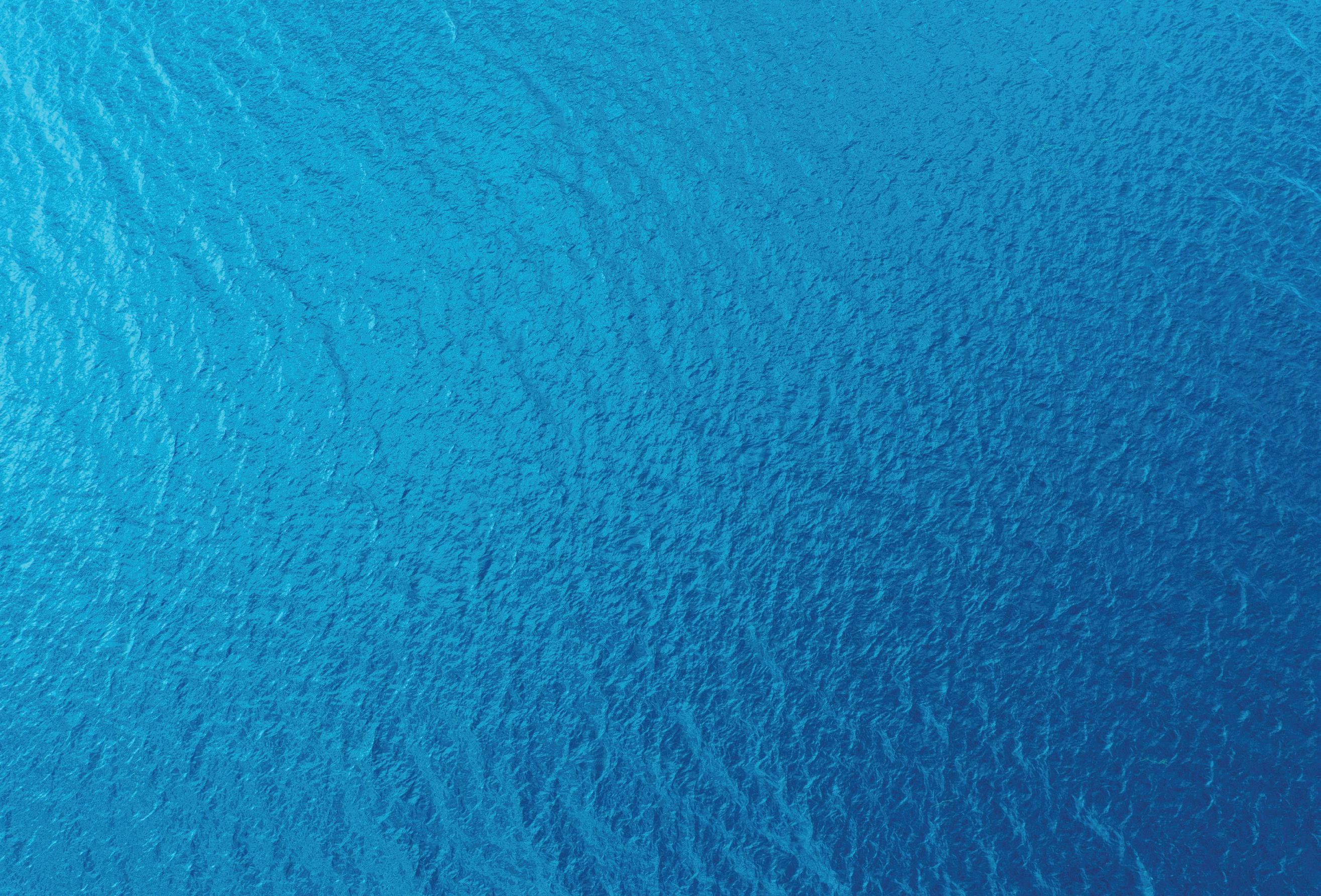
Words by Residency Malta Agency

Yes. Tech-savvy individuals with itchy feet have found out they can work remotely and seamlessly from many exciting countries. This trend has led to the creation of digital nomad visas in various countries. Among these, Malta stands out as the ultimate destination for digital nomads.
Here are seven compelling reasons why Malta should be your top choice for your digital nomad adventure:
In Malta, island living isn’t a luxury, it’s a way of life. Known for its warm hospitality, Malta offers a sense of community that is hard to find elsewhere. Whether you’re mingling with locals at one of the many village festivals or exploring solo, you’ll never run out of things to do. The island offers a wealth of outdoor activities and Malta’s favourable climate allows you to enjoy its stunning beaches year-round, while its vibrant nightlife is not only fun but also among the safest in the world.
Malta’s expat community is thriving, making it easy for newcomers to feel at home. With one in four residents being expats, you’ll never lack companionship. Many digital nomads, particularly from the EU, have chosen to stay long-term, often starting their own businesses. With the Nomad Residence Permit, non-EU nationals can also enjoy the perks of living in and working from Malta.
For digital nomads, staying connected is crucial. Malta offers an excellent infrastructure, including nationwide 5G coverage and free public Wi-Fi hotspots. Whether you’re working from a café, beach, or co-working space, you’ll have the internet speed you need. And if you’re in the mood for travel, Malta’s strategic location makes it easy to plan a quick getaway. With daily air and sea links to Europe, North Africa and the Middle East, you’re never far off from visiting family or doing business in other cities.
Navigating Malta is simple, thanks to its compact size and extensive bus system. You can traverse the island in as little as 40 minutes, and bus fares and in-harbour ferry rides are free for residents. A short 20-minute ferry ride also connects you to Malta’s smaller, tranquil sister island, Gozo.
Malta offers a wide range of fully-furnished accommodation options. Prices vary based on location and amenities. Consider renting in quieter towns or villages for more affordable rates. Thanks to the island’s excellent connectivity, living outside the bustling areas is a smart and cost-effective choice for digital nomads.
Malta is a foodie’s paradise; featuring everything from food trucks and traditional pastizzerias to Michelin-star restaurants, the experience is exceptional. If you prefer to cook at home, Malta’s fresh produce, abundant specialty shops and local street vendors make it easy to prepare delicious meals at reasonable prices.
When you need a break from Malta’s fast-paced life, the island of Gozo is the perfect retreat. Known for its slower pace, Gozo offers affordable accommodation, stunning beaches and an ideal escape for digital nomads looking to recharge and reconnect with nature.
If you’re a non-EU national, self-employed, employed, or a freelancer with foreign companies and earning €42,000 yearly, you may be eligible for Malta’s Nomad Residence Permit. It is valid for one year, with the possibility of extension if eligibility criteria are met. So, don’t miss your chance. Visit nomad.residencymalta.gov.mt to start your digital nomad adventure in the heart of the Mediterranean.
Words by KM Malta Airlines
Two KM Malta Airlines pilots joined a SiGMA Foundation expedition to climb Morocco’s Mount Toubkal and found it to be a profoundly rewarding experience in more ways than one.
As the summer of 2023 drew to a close, an exciting challenge loomed on the horizon for KM Malta Airline’s Captain Karl Falzon and Captain Mark Soler. Inspired by past trekking experiences, including a successful climb of Mount Snowdon in Wales, they sought a new adventure. Their answer came in the form of Mount Toubkal, Morocco’s highest peak, standing tall at 4,167m.
JOINING THE SIGMA FOUNDATION EXPEDITION
Coincidentally, the SiGMA Foundation had scheduled an expedition to Mount Toubkal for May 2024. Known for organising expeditions to raise funds for charitable causes, SiGMA Foundation’s mission for this climb was to support the Women’s Empowerment Project in Bonga, Ethiopia.
The project aims to construct an institute that will annually provide training and education to around 500 women and children in various skills. This initiative seeks to empower these individuals, giving them a stronger foothold in society.
Motivated by the dual purpose of personal challenge and charity, Karl and Mark joined a group of 20 fellow adventurers. Over the next nine months, they dedicated themselves to rigorous training. This involved regular treks across the picturesque landscapes of Malta and Gozo, focusing on building stamina, endurance and confidence in navigating rough terrain. This period also fostered strong bonds among the team members, enhancing the overall experience.
THE TREK: A THREE-DAY TRIP
The actual trek unfolded over three days, each presenting its own set of challenges and rewards: The journey began with a 12km ascent from Imlil to a refuge situated at approximately 3,200m above sea level. On the second and most demanding day, they started early, with the group trekking through the darkness to the summit.

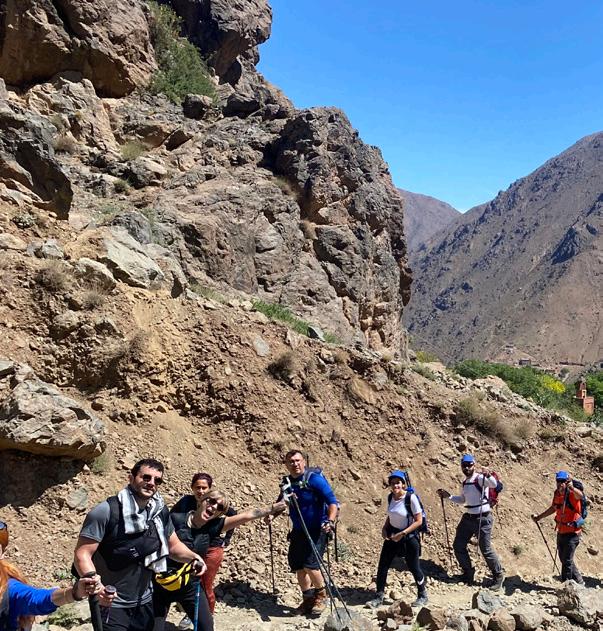


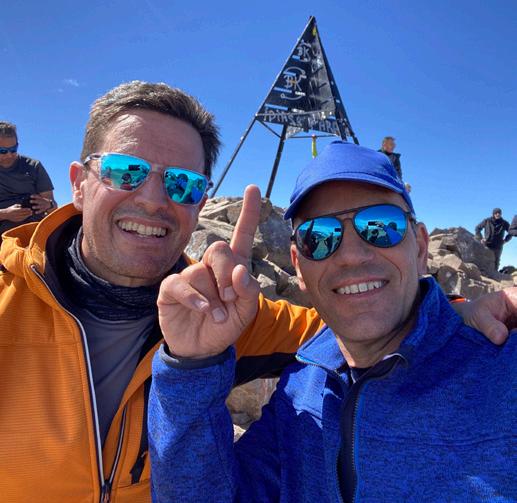
The climb required not only physical strength but also mental resilience, as they contended with the thinning air at high altitudes. Despite the difficulties, reaching the summit after a six-hour trek was a moment of triumph. The descent back to the refuge, though less strenuous, required careful navigation over uneven terrain.
The expedition concluded with a return to base camp on the third day, allowing the team to reflect on the breathtaking scenery and the fresh, unpolluted air they experienced.
For Karl, the expedition was a profoundly rewarding experience. The exhilaration of reaching the summit was matched by the satisfaction of contributing to a noble cause. The fundraising efforts, supported by the generosity of family, friends and colleagues, raised an impressive €8,000.
For Mark, the highlight was the rare opportunity to disconnect from the digital world and simply connect with fellow climbers. The two days spent at 3,200m, without the distractions of modern technology, allowed for deep, meaningful conversations and a unique bonding experience.
Karl and Mark’s journey to Mount Toubkal serves as an inspiring testament to what can be achieved with the right mindset and preparation. They encourage anyone considering such a challenge to embrace it. With determination and the proper training, such an adventure is within reach for all.
Their story not only highlights personal achievements but also the power of collective effort in making a difference in the lives of others.






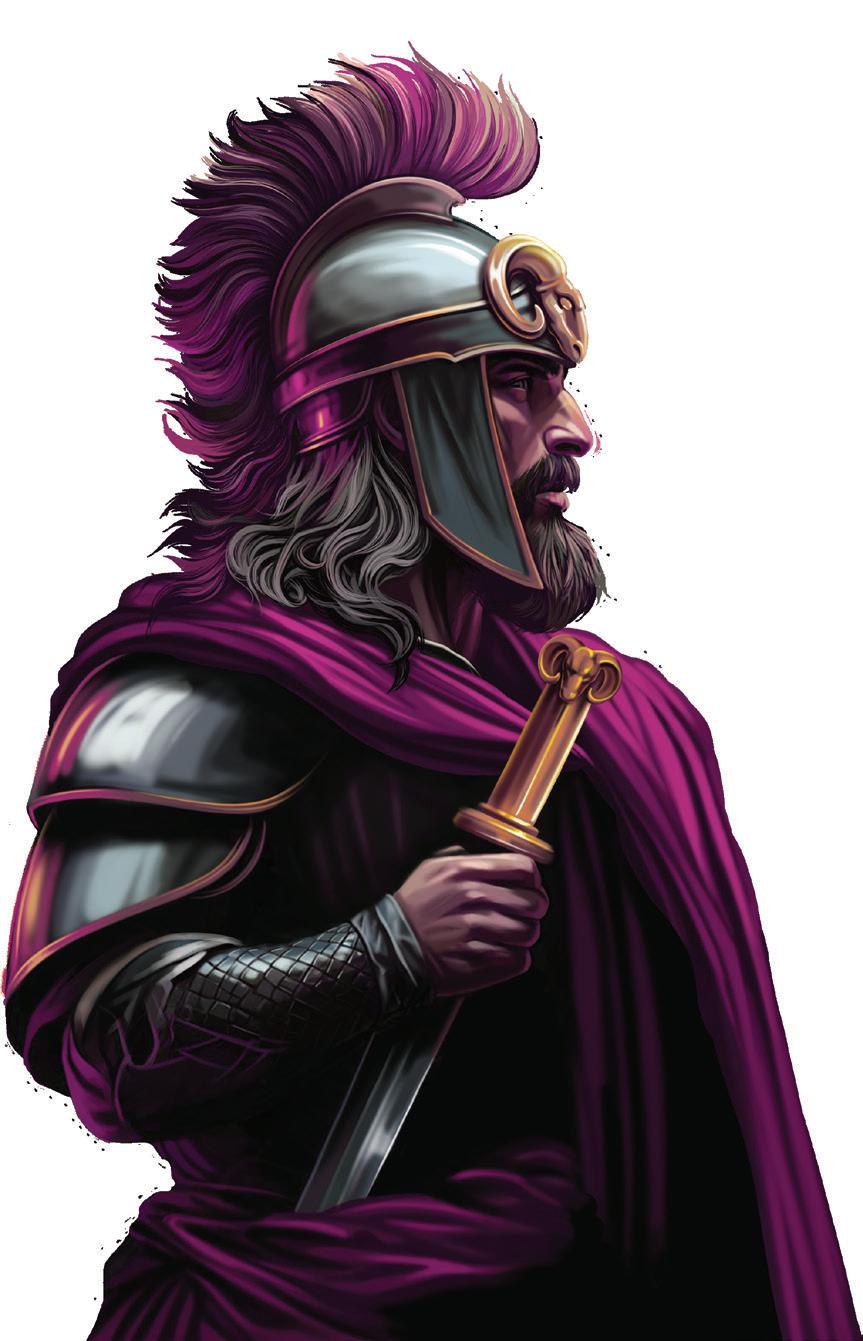
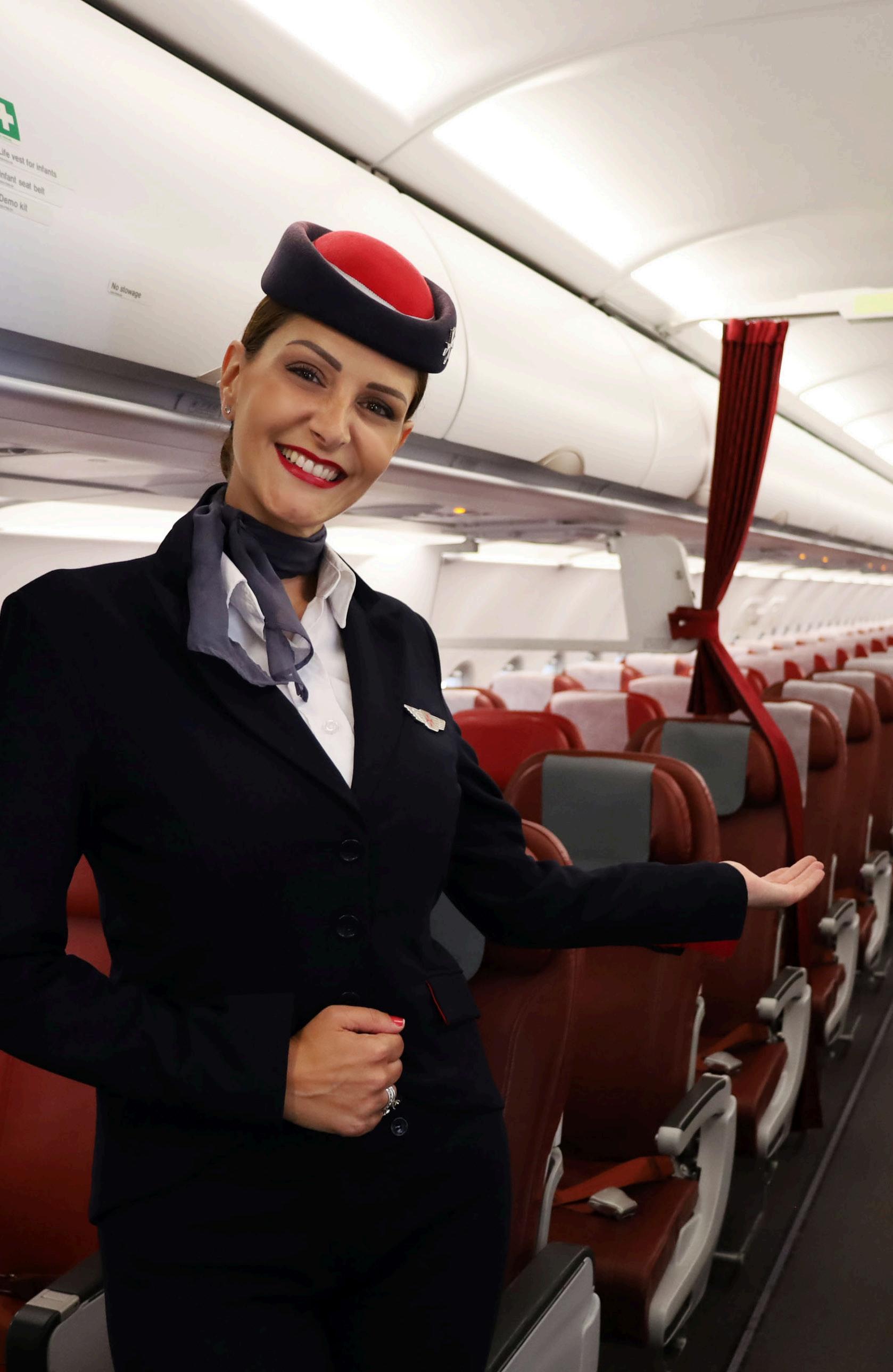

Passaġġi is inspired by the Maltese word for ‘passages’, capturing our mission to connect Malta with the wider world. More than just a name, it evokes the spirit of travel, connectivity and cultural exchange, echoing Malta's historic role as a crossroads of civilisations. By linking the Maltese Islands to an ever-expanding global network, we invite travellers to uncover Malta's rich heritage and captivating charm. The name also reflects our forward-looking approach, embracing innovation and sustainable growth to continually enhance the journey for our passengers.
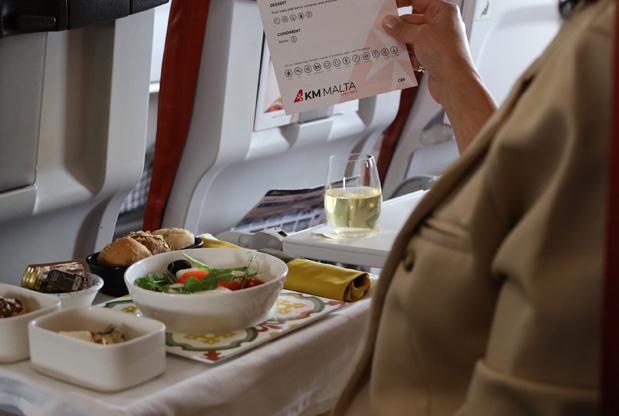
KM Malta Airlines’ Business Class dining reflects the rich heritage of Malta, with dishes inspired by local culture and crafted from premium, locally sourced ingredients. Enjoy Maltese specialities like ġbejniet (traditional cheeselets) and herbs, along with fresh products from local farmers. Meals are presented with attention to detail, accompanied by a range of beverages, including local wines. Thoughtful touches, such as vibrant tiles and ceramic Żinġla bowls, evoke the island’s charm, creating an exceptional dining experience that celebrates Maltese traditions at 30,000 feet.
With an impressive career spanning over 28 years in the aviation industry, Karen began her flying career with the national airline as a cadet and later as an independent First Officer on the Avro RJ. She later transitioned to the Boeing fleet as a First Officer, flying the Boeing 737-200, 737-300/400/500, as well as the B737-700, and eventually, on to the A320 family. In June 2010, she was promoted to Captain.
In her new role as Fleet Manager, Capt. Sant will be responsible for overseeing all flight operations support processes of the airline, ensuring the highest standards of operational excellence, and for mentoring and developing our team of skilled pilots.
“I am deeply appreciative of everyone's dedication and hard work, which has contributed to upholding our fleet's high safety standards,” Capt. Sant said. “My priority is to work in the interest of the pilot community and each individual’s well-being to achieve a healthier and safer environment while meeting our airline’s commercial demands. I believe that together we can continue to provide an exceptional service to our guests. Safe flying."


Introducing KM Rewards – the KM Malta Airlines’ loyalty programme – designed to reward its community on purchases made through the website by earning and spending SkyBux, gaining Status Points and moving through Tiers .
SkyBux is the official currency of KM Rewards. You can earn and redeem SkyBux when purchasing flight tickets through the website. They will be automatically earned once the ticket is used. = €0.01c
Apart from earning SkyBux to spend, our loyalty programme also allows you to gain Status Points, which will determine the current and future tier membership level.
You have 12 months to earn enough Status Points to maintain your tier, upgrade, or downgrade to another tier. This qualification period starts when you join KM Rewards or earn a new tier.
You will begin your journey as a Member and progress through the tiers, from Traveller to Explorer, where the benefits get better. But the ultimate destination? Pioneer status – where you enjoy exclusive rewards and privileges.
Up to 449 Status Points
Up to 2,999 Status Points
Up to 9,999 Status Points
10,000+ Status Points THE HIGHER THE

and earn rewards, and so much more, each time you fly!
Dive into your own personalised KM Rewards dashboard, packed with everything you need to know: your Membership number, your SkyBux balance, Tier level, and Status Points earned.





Discover the Mediterranean Tourism Forum 2024 and be part of the conversation shaping the future of tourism.
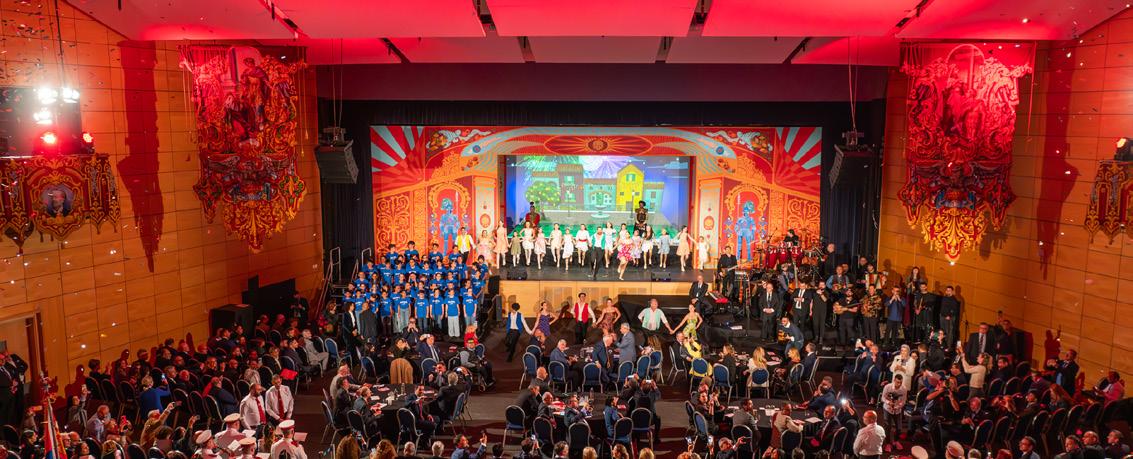
Get ready to join an extraordinary gathering of over 1,500 professionals from 28 countries at the 9th edition of the Mediterranean Tourism Forum, with the participation of KM Malta Airlines.
Organised by the Mediterranean Tourism Foundation, this premier event at Hilton Malta is set to be the ultimate platform for networking and thought leadership.
Embrace the theme: Mediterranean ARTS – Amidst Rapid Transformative Shifts
This year, the forum celebrates the region’s vibrant artistic heritage and explores how creativity can inspire effective leadership in these dynamic times. The theme, Mediterranean ARTS – Amidst Rapid Transformative Shifts – highlights the dynamic changes shaping our world.
ARTS serves as an acronym reflecting the Mediterranean’s rich artistic heritage, while addressing rapid global transformations, including advancements in artificial intelligence, inflation, social shifts and evolving tourism markets.
Why you should attend
> Networking Opportunities: Connect with industry leaders and peers from around the globe.
> Thought Leadership: Gain insights from top experts on managing overtourism, emerging hospitality trends and the impact of developments in the Red Sea region on Mediterranean tourism.
> Artistic Inspiration: Discover how the arts can guide successful leadership in these rapidly changing times.
Key highlights
> Renowned Experts: Hear from global experts addressing key topics such as the transition from green to regenerative tourism.

> Visionary Discussions: Engage in discussions on blending creativity with sensitivity to navigate and respond to the shifts around us effectively.
Don’t miss out on this unique opportunity to be inspired and to inspire others. Join the Mediterranean Tourism Forum 2024 between 25th and 27th November and be part of the conversation shaping the future of tourism.
For more details and to stay updated, visit the official website of the Mediterranean Tourism Foundation: medtourismfoundation.com

KM Malta Airlines signs the IATA Safety Leadership Charter, reinforcing its safety commitment.
KM Malta Airlines has officially joined over 90 global airlines as a signatory to the IATA Safety Leadership Charter, reinforcing its dedication to fostering a strong safety culture within the organisation.
The IATA Safety Leadership Charter is a global initiative aimed at the continuous evolution of a safety culture across aviation organisations. It emphasises the importance of leadership in driving a positive safety culture, which is key to accident and incident prevention.
KM Malta Airlines recognises that leadership plays a fundamental role in shaping organisational safety, with actions and attitudes from the top influencing the behaviour of all employees.
In a typical year, KM Malta Airlines operates approximately 13,000
accident-free flights, further contributing to the aviation industry's improving safety record. However, as safety improves, the challenge of maintaining continuous progress becomes more complex. The IATA Charter addresses this by fostering a culture of open reporting, trust and collaborative safety management.
By signing the charter, KM Malta Airlines commits to:
• Embedding safety principles through measurable actions and sharing progress with IATA and the industry.
• Promoting a culture of continuous safety improvement at all levels of the organisation.
• Nurturing trust and encouraging the sharing of safety-related information.
• Collaborating with industry, government and stakeholders to strengthen aviation safety.
The guiding principles adopted by KM Malta Airlines include prioritising safety, fostering awareness, integrating safety into business strategies and creating an environment of trust and accountability.
As Malta’s national airline, KM Malta Airlines remains committed to enhancing its safety performance and contributing to a safer aviation industry. The airline invites industry partners and stakeholders to join it in its commitment to driving a safety culture and ensuring the continued success of the aviation sector.
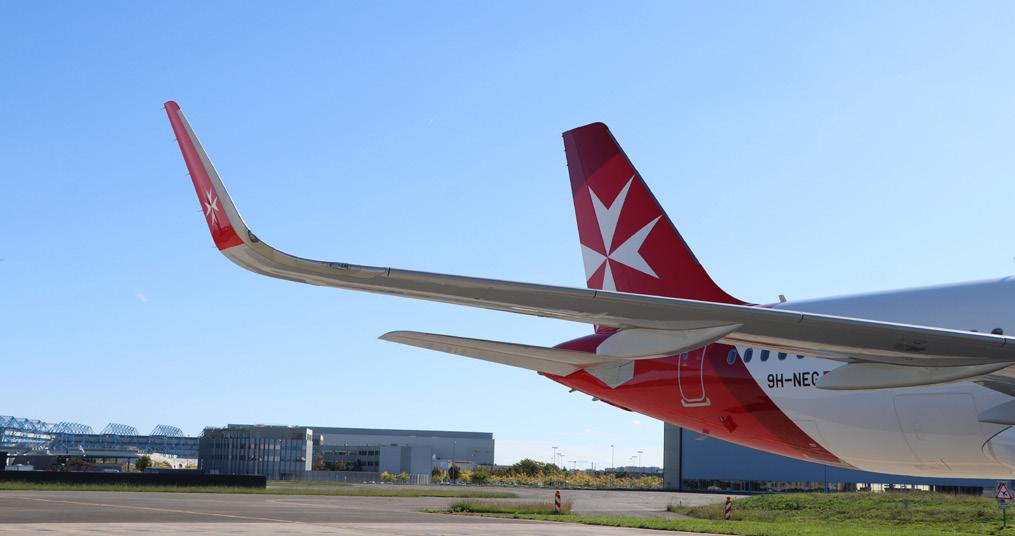
Amelie Lens, I Hate Models, DVS1 & Oscar Mulero, Paula Temple B2B SNTS and BLK. are among the headliners.

Rising from the enigmatic depths once more, Dalma Festival returns for a second edition on 6th and 7th December for a pulsating techno odyssey on the island of Malta. After last year’s much-talked-about debut, excitement levels for this year's event are running high.
Featuring a blend of living legends, future stars and innovators, this year's line-up is an unmissable techno celebration, meticulously crafted by the Glitch Festival team. Rest assured, attendees from all over the world are in for a memorable journey. With two stages on
offer, each promises a mind-bending, immersive, visual experience for those who dare to delve into the abyss of Dalma.
The second edition of Dalma Festival will take place at the Malta Fairs and Conventions Centre (MFCC), located in Ta' Qali. Don't miss out!
Visit dalmafestival.com to purchase your ticket or for more information.
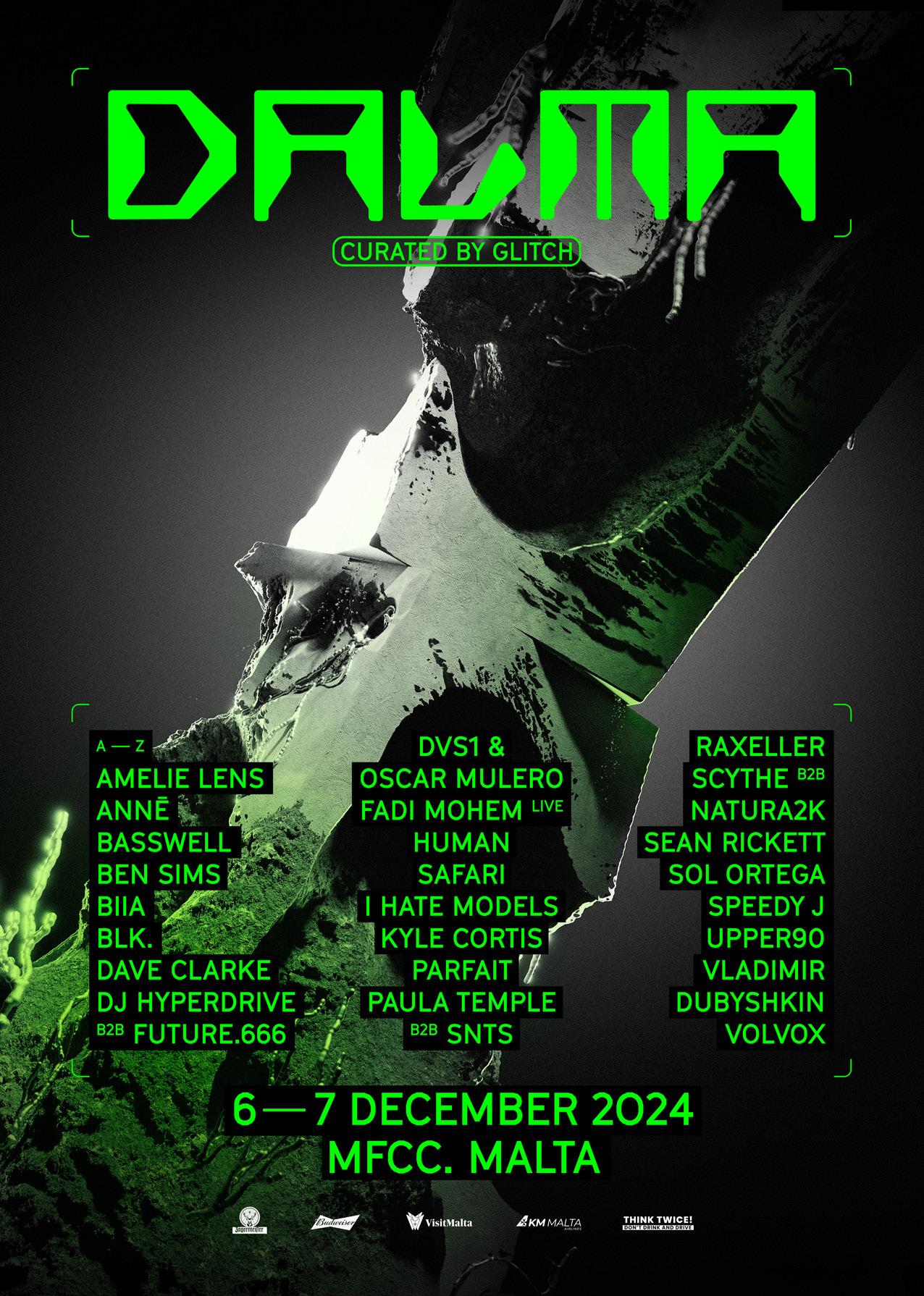
Amsterdam (AMS) : Berlin (BER) : Brussels (BRU) : Catania (CTA) :
Düsseldorf (DUS) : London (LHR) : London (LGW) : Lyon (LYS) : Madrid (MAD) : Milan (LNT) : Munich (MUC) : Paris (CDG) : Paris (ORY) : Prague (PRG) : Rome (FCO) : Vienna (VIE) : Zurich (ZRH) : 3hr25 2h55 3h05 0h45 2h55 3h40 3h20 2h25 3h00 2h00 2h30 3h00 2h55 2h30 1h35 2h20 2h25
We’re excited to have you with us and want to ensure you have a comfortable and enjoyable flight. Here are a few important tips to keep everything smooth and safe for everyone.
Aħna ħerqanin li inti tkun magħna, u rridu nkunu żguri li jkollok titjira komda u pjaċevoli. Hawnhekk issib ftit pariri importanti biex jinżamm kollox pinna u sigur għal kulħadd.
Malta International Airport (MLA), the main hub for KM Malta Airlines, first opened in 1958 as Luqa Airport and has since grown into a modern, world-class facility. Playing a crucial role in connecting the island to hundreds of destinations, MLA supports KM Malta Airlines’ extensive network of flights. Guided by core values, the airport ensures a seamless travel experience for all passengers. By working sustainably and collaboratively with its partners, MLA continues to enhance Malta's connectivity and deliver exceptional service to travellers worldwide.
L-Ajruport Internazzjonali ta’ Malta (MLA), iċ-ċentru ewlieni għall-KM Malta Airlines, fetaħ għall-ewwel darba fl-1958 u minn dakinhar kiber f’faċilità moderna u ta’ klassi dinjija. Bi rwol kruċjali biex jgħaqqad ’il gżiritna ma’ mijiet ta’ destinazzjonijiet, l-MLA jappoġġja x-xibka estensiva tat-titjiriet tal-KM Malta Airlines. Iggwidat minn valuri tal-qalba, l-ajruport jiżgura esperjenza ta’ vjaġġ trankwill għall-passiġġieri kollha. Permezz tal-ħidma sostenibbli u kollaborattiva mal-imsieħba tiegħu, l-MLA jissokta jsaħħaħ l-konnettività ta’ Malta u jagħti servizz eċċezzjonali lill-vjaġġaturi mad-dinja kollha.
OUR FLEET

AIRBUS 320NEO
QUANTITY: 8 IN FLEET
NUMBER OF SEATS: 180
ENGINES: CFM LEAP-1A
MAXIMUM TAKE OFF WEIGHT: 73.5 / 77 METRIC TONS
OVERALL LENGTH: 37.57M
WINGSPAN: 35.8M
CRUISING SPEED: MACH 0.78 (450KNOTS, 833KM/HR)
RANGE: 6,500 KM, 3,500 NMI, 4,025 SMI
FUEL CONSUMPTION: 1.8 LITRES PER 100KM PER PASSENGER*
* Based on a 1,000NM (1,860KM) journey with 180 pax and bags.
Your seatbelt is here for your protection! Please fasten it whenever the seatbelt sign is on or while the aircraft is moving. For your safety, we recommend keeping it fastened throughout the flight. If you’re travelling with a child under two, they’ll need to be secured on your lap with an infant seatbelt, which our crew will be happy to provide.
Only alcohol served by our crew is allowed on board, and it’s only for passengers aged 17 and over. Remember, alcohol can have a stronger effect at high altitudes, so please enjoy responsibly. In line with international regulations, we may prevent intoxicated passengers from boarding or continuing their journey.
We want everyone to feel comfortable, so please respect your fellow passengers and crew. Please do not take photos or videos on board without their verbal permission.
For the safety and comfort of everyone, smoking –including e-cigarettes – is strictly prohibited at any time when on board the aircraft. If you see anyone smoking, let our crew know immediately.
Iċ-ċinturin tiegħek qiegħed għall-protezzjoni tiegħek! Jekk jogħġbok aqflu kull meta s-sinjal taċ-ċinturin ikun mixgħul jew sakemm ikun miexi l-ajruplan. Għas-sigurtà tiegħek, aħna nirrakkomandaw li żżommu maqful matul it-titjira kollha. Jekk qed tivvjaġġa bl-ulied taħt is-sentejn dawn għandhom jinżammu fuq ħoġrok b’ċinturin għat-trabi li l-ekwipaġġ ikun kuntent li jagħtik.
Abbord huwa permessibbli biss l-alkoħol servut mill-ekwipaġġ tagħna, u dan qiegħed biss għallpassiġġieri li għandhom 17-il sena jew iktar. Ftakar, f’altitudnijiet għolja l-alkoħol jista’ jkollu effetti aqwa, għalhekk, jekk jogħġbok, ħu gost b’mod responsabbli. Skont ir-regolamenti internazzjonali, nistgħu nipprevjenu lill-passiġġieri fis-sakra milli jitilgħu abbord jew milli jissuktaw bil-vjaġġ tagħhom.
Irridu li kulħadd iħossu komdu, għalhekk, jekk jogħġbok, irrispetta lill-passiġġieri ta’ miegħek u lillekwipaġġ. Jekk jogħġbok tiħux ritratti jew filmati abbord mingħajr il-permess verbali tagħhom.
Għas-sigurtà u l-kumdità ta’ kulħadd, it-tipjip –inklużi s-sigaretti elettroniċi – huwa pprojbit f’kull waqt abbord l-ajruplan. Jekk tara lil xi ħadd ipejjep, għarraf lill-ekwipaġġ tagħna minnufih.
Any devices that can send or receive data by wireless means, such as smartphones, tablets and e-readers must be switched to flight mode before departure and can be used throughout the flight. If data transmission capability cannot be switched off while the device is operating, the device itself must be switched off completely for the duration of the flight. Bluetooth connectivity can be used during all phases of flight.
These should be turned off and stowed away during taxi, take-off and landing, but you’re free to use them during the cruise.
The use of Wi-Fi with flight mode enabled is allowed on aircraft which are equipped with an in-flight entertainment system. Follow any crew instructions regarding connectivity.
Headphones may be used during all phases of flight, however we ask you to remove them during the safety briefing. Customers sitting in an emergency exit row must refrain from using headphones during taxi, take-off and landing.
If any device is damaged, starts to overheat or produces smoke, is lost or falls into the seat structure, please notify our crew immediately. Do not try to retrieve it yourself if it falls between seats; we’ll take care of it. Carriage of damaged, defective or recalled lithium batteries or devices is prohibited on board our flights.
We kindly ask that all passengers follow these guidelines for the safety and comfort of everyone on board. Have a fantastic flight with KM Malta Airlines!
Kwalunkwe tagħmir elettroniku li jista’ jibgħat jew jirċievi d-data mingħajr il-ħtieġa ta’ wajer, bħall-ismartphones, it-tablets u l-e-readers għandhom jinqalbu għall-modalità tat-titjira qabel it-tluq, u hekk jistgħu jintużaw matul ittitjira kollha. Jekk il-funzjoni tat-trasmissjoni tad-data ma tistax tintefa waqt li t-tagħmir elettroniku jkun mixgħul, it-tagħmir innifsu għandu jintefa għalkollox tul it-titjira kollha. Il-konnettività tal-Bluetooth tista’ tintuża tul il-fażijiet kollha tat-titjira.
Dawn għandhom jintfew u jintrefgħu matul is-sewqan, it-tlugħ u l-inżul, iżda tista’ tużahom b’mod liberu tul il-kruċiera.
IL-Wi-Fi
L-użu tal-Wi-Fi bil-modalità tat-titjira mixgħula huwa permessibbli fuq l-ajruplani mgħammra bis-sistema taddivertiment ta’ matul it-titjira. Segwi kull istruzzjoni talekwipaġġ rigward il-konnettività.
Il-headphones jistgħu jintużaw tul il-fażijiet kollha tat-titjira, madankollu nitolbuk tneħħihom waqt l-ispjegazzjoni tas-sigurtà. Il-klijenti bilqiegħda f’xi filliera tal-ħruġ tal-emerġenza m’għandhomx jużaw ilheadphones matul is-sewqan, it-tlugħ u l-inżul.
SAĦAN IŻŻEJJED
Jekk xi tagħmir elettroniku jkollu l-ħsara, jibda jisħon jew idaħħan, jintilef jew jaqa’ fl-istruttura tal-pultruna, jekk jogħġbok għarraf lill-ekwipaġġ tagħna minnufih. Tippruvax issibu inti jekk jaqa’ bejn il-pultruni; nieħdu ħsiebu aħna. Il-ġarr ta’ batteriji tal-litju jew tagħmir elettroniku bil-ħsara, difettuż jew wieħed li ntalab jinġabar lura huwa pprojbit abbord it-titjiriet tagħna.
Ġentilment nitolbu li l-passiġġieri kollha jsegwu dawn il-linji gwida għas-sigurtà u l-kumdità ta’ kulħadd abbord. Nixtiqulek titjira fantastika mal-KM Malta Airlines!

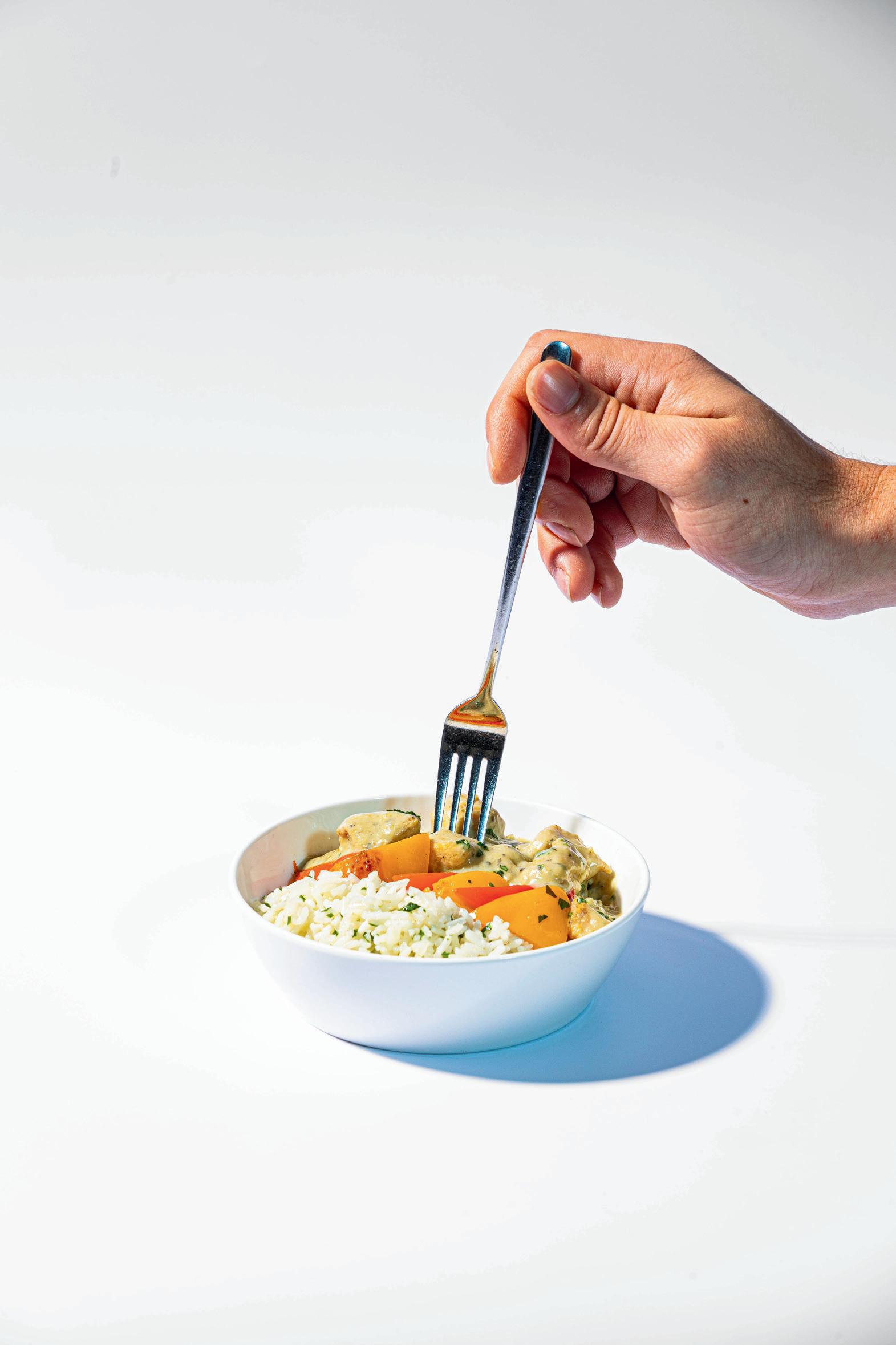

Pre-order your favourite meal before your next KM Malta Airlines flight and have it delivered straight to your seat. or visit kmmaltairlines.com/inflight-catering
Discover a life of luxury at the exclusive Verdala Terraces, Malta’s most sought-after residential haven, nestled in the charming town of Rabat. Located just a short distance from the historic Citadel of Mdina, this lavish collection of residences, duplexes, and penthouses offers an unparalleled level of elegance, all enveloped by the natural beauty of the Maltese countryside.







OPEN EVERY DAY: MONDAY – SATURDAY 10:00AM – 7:30PM. SUNDAY 11:00AM – 6:00PM.

